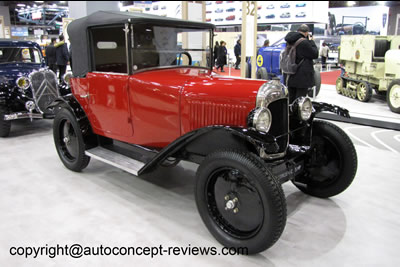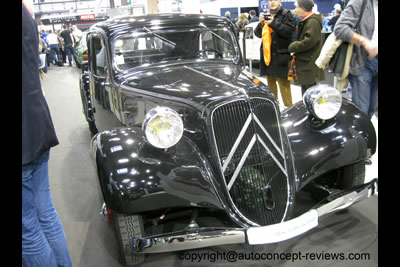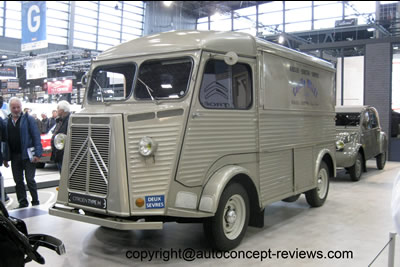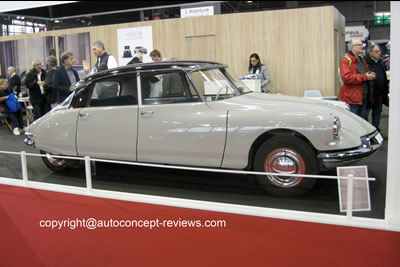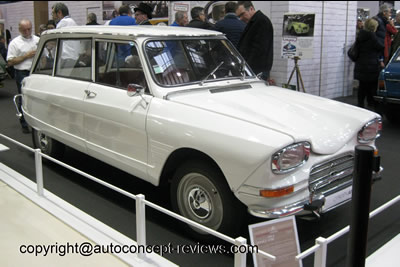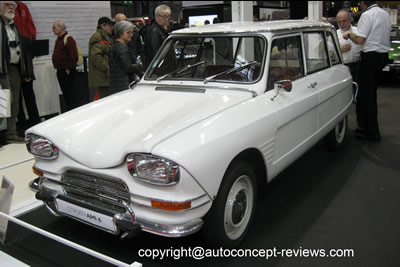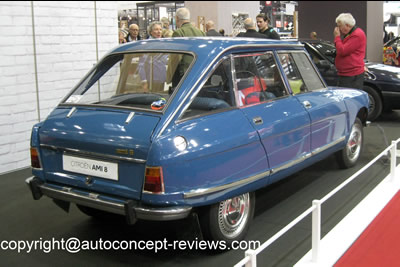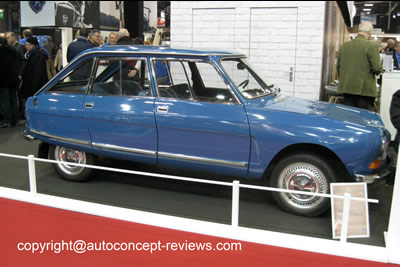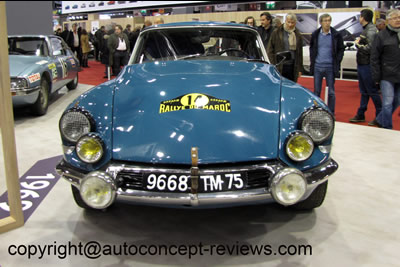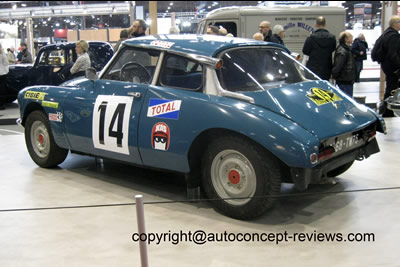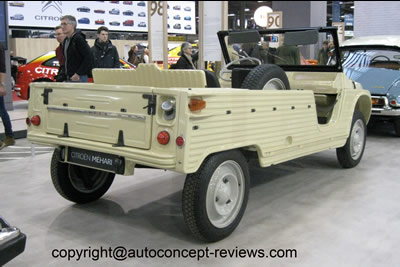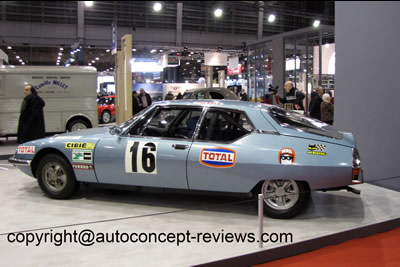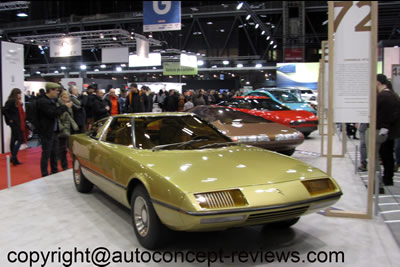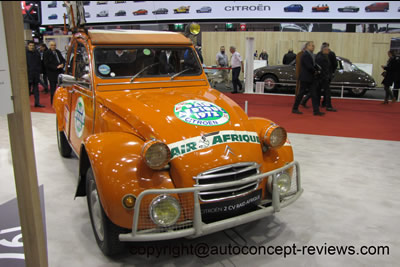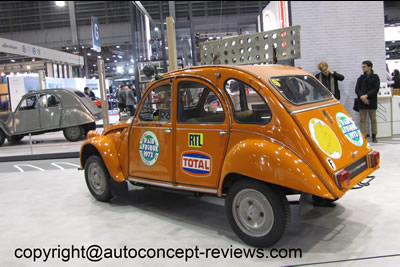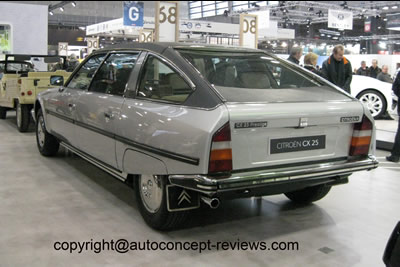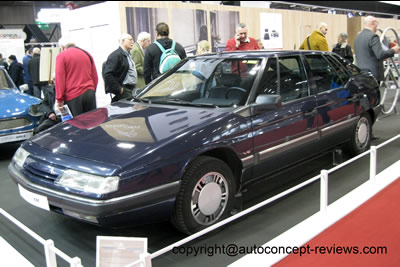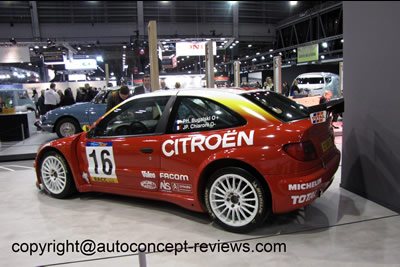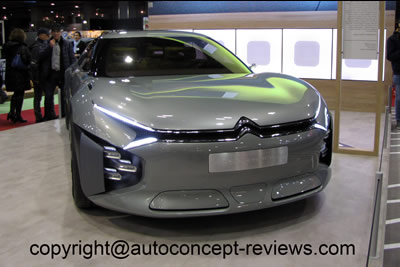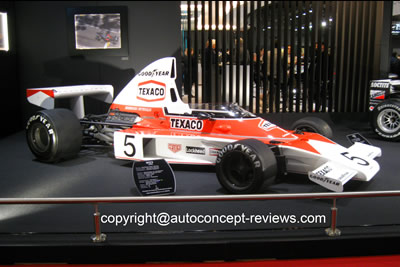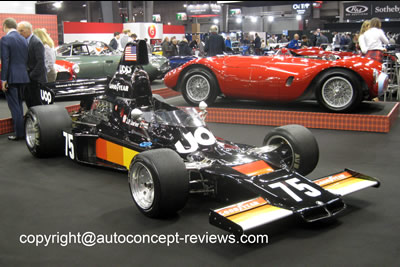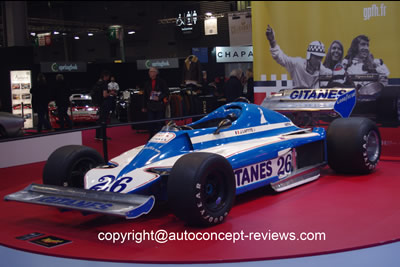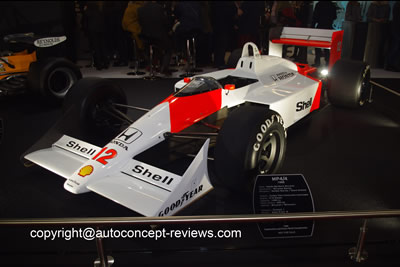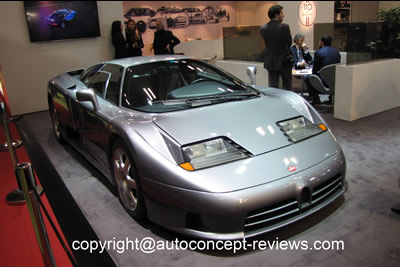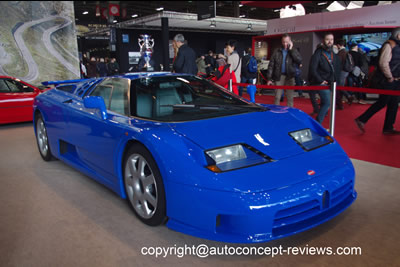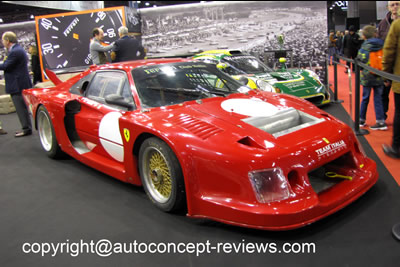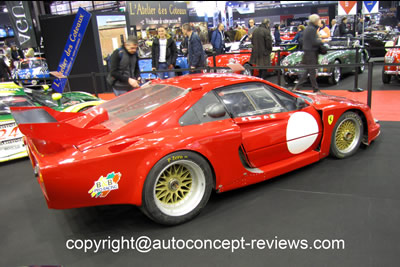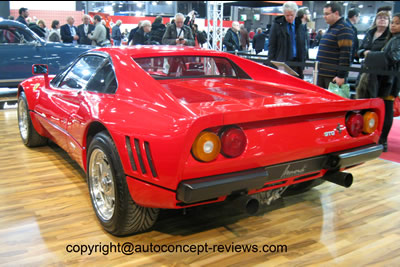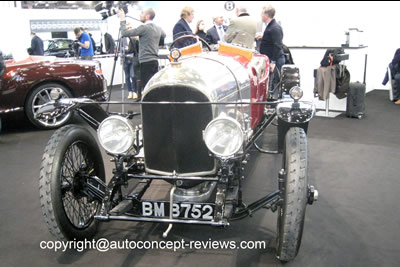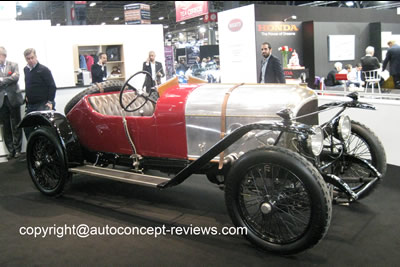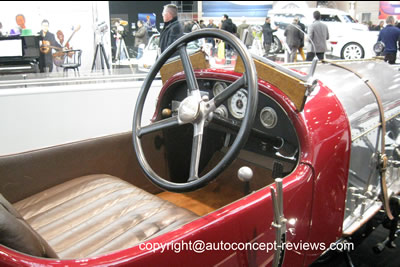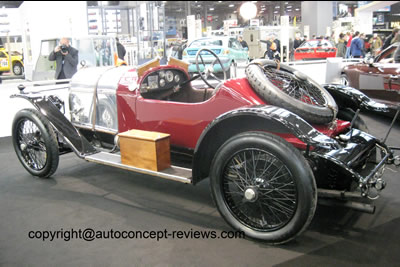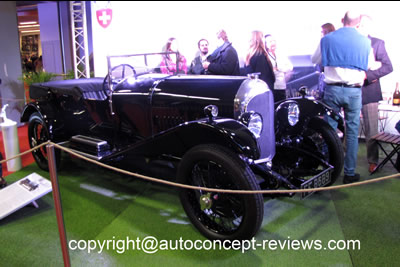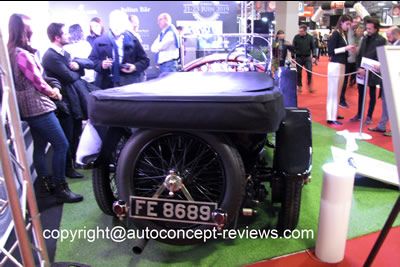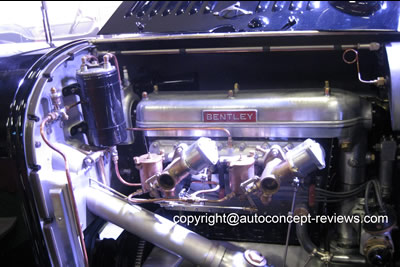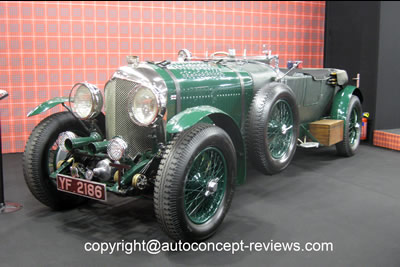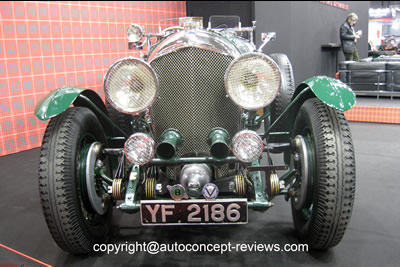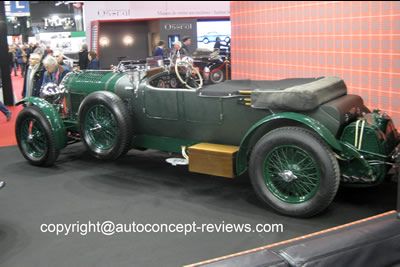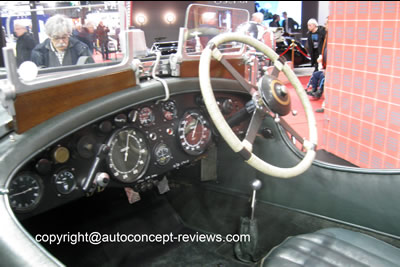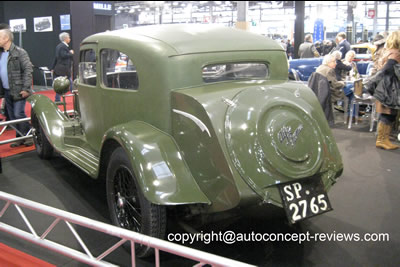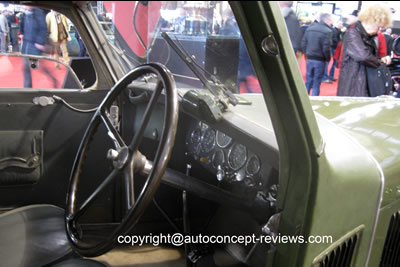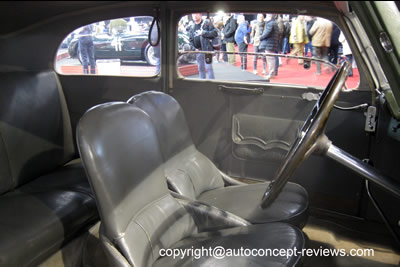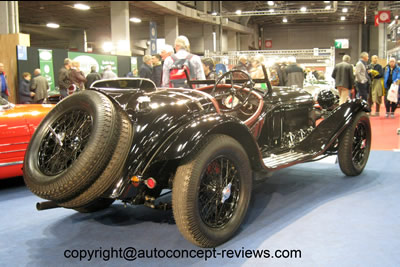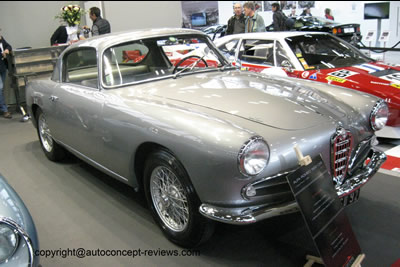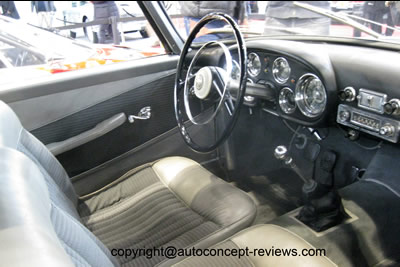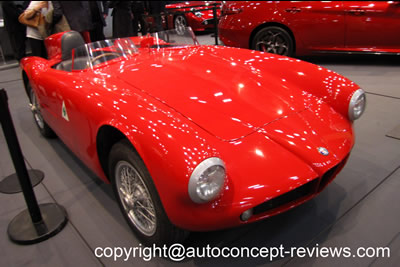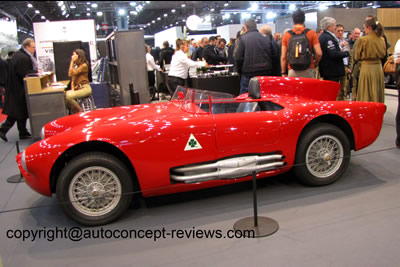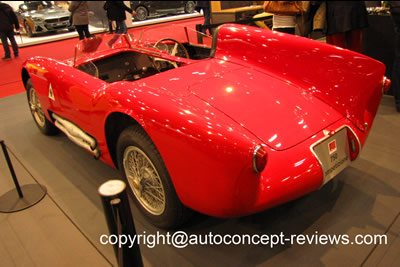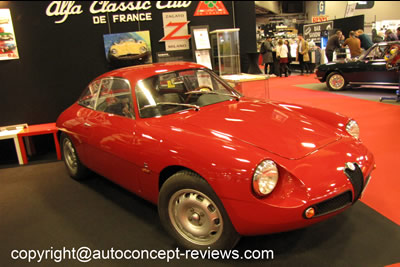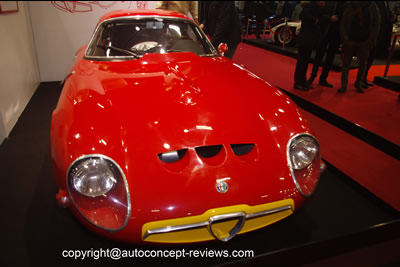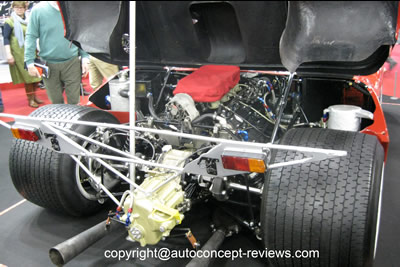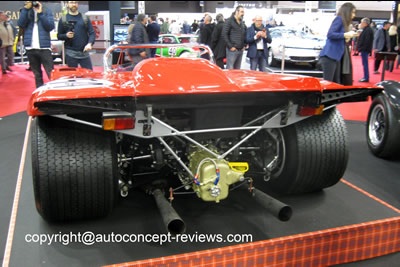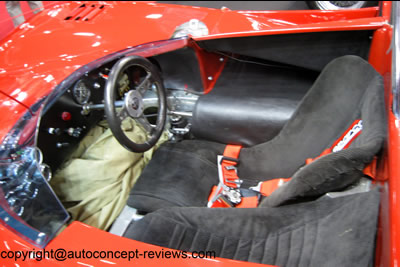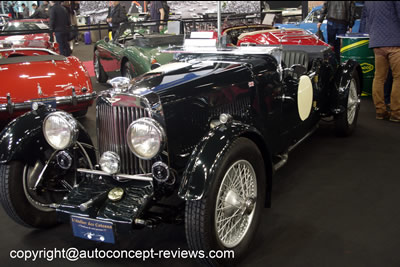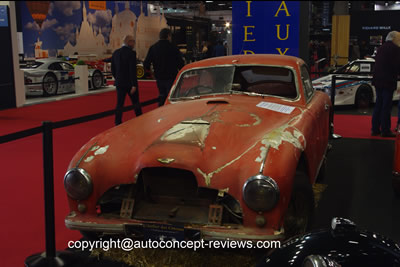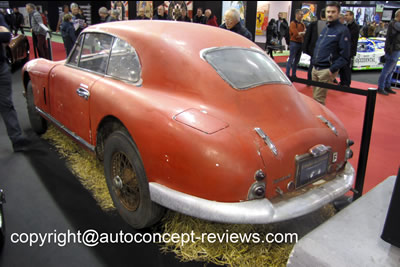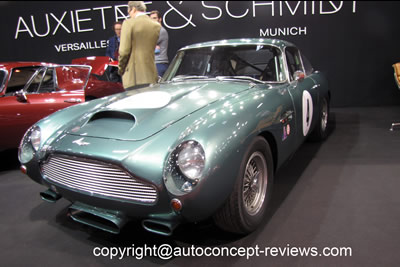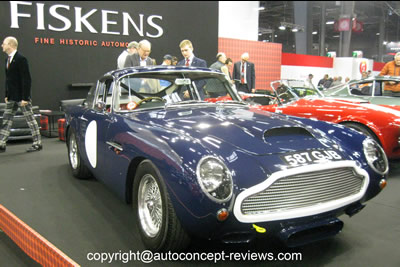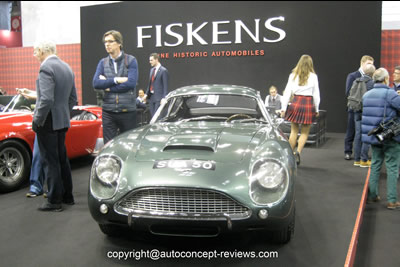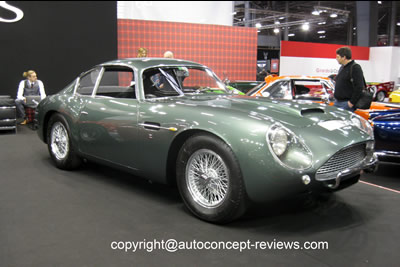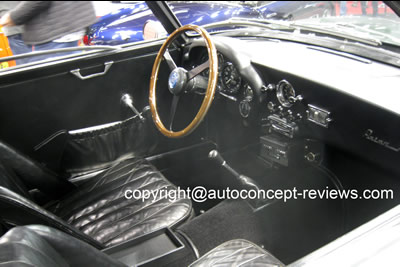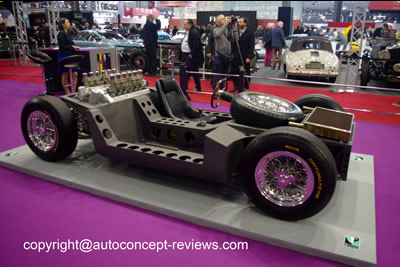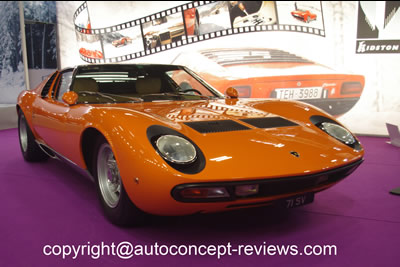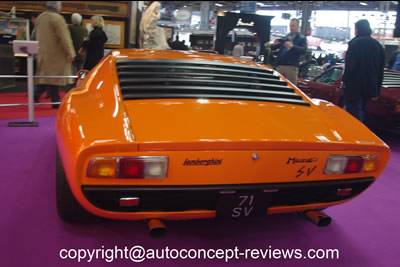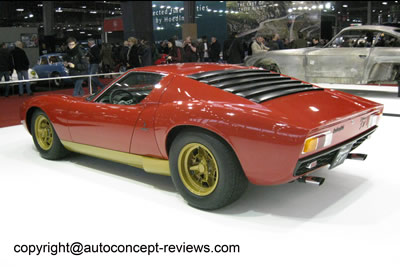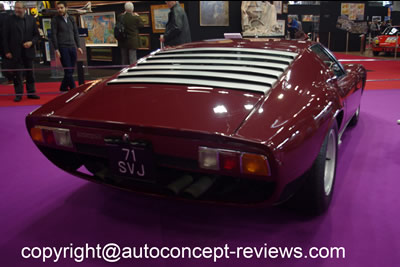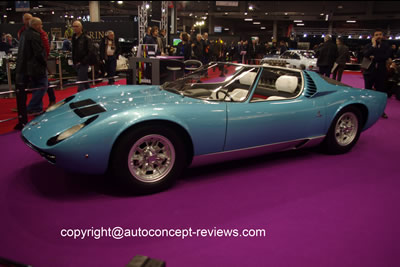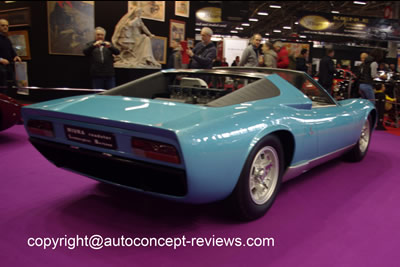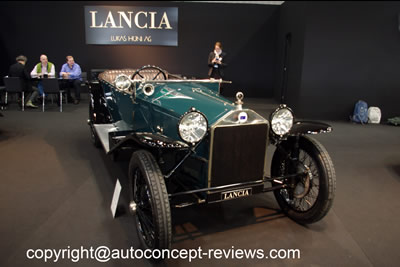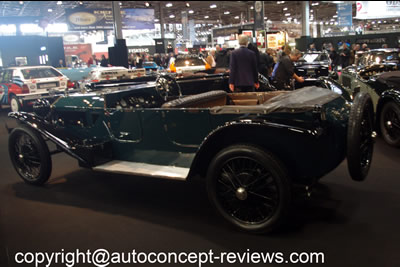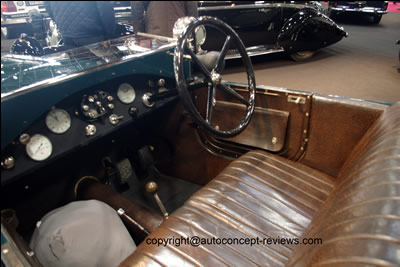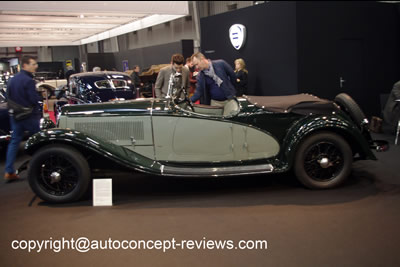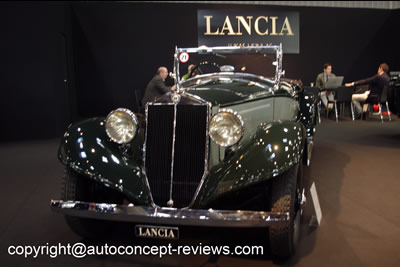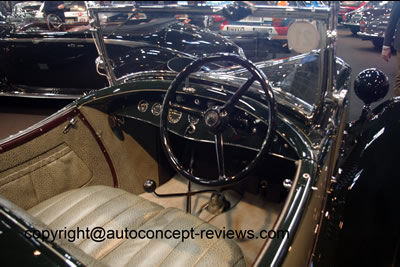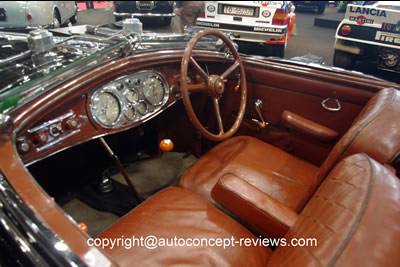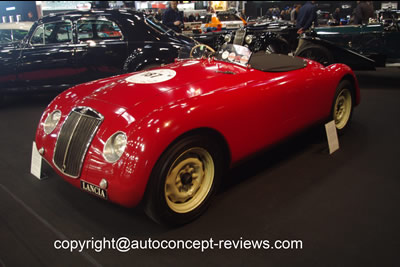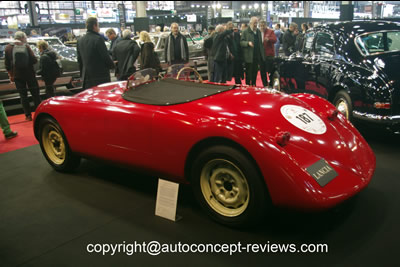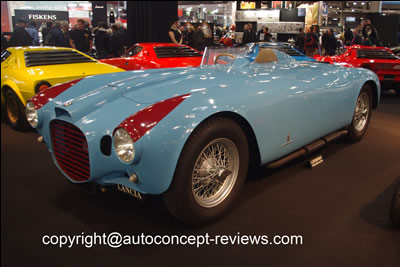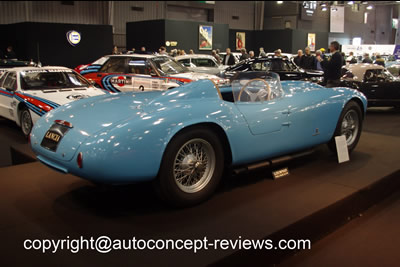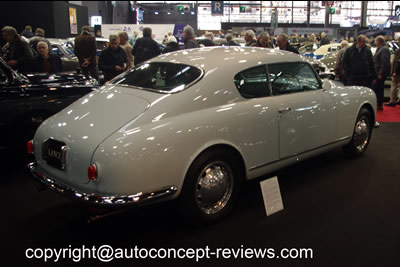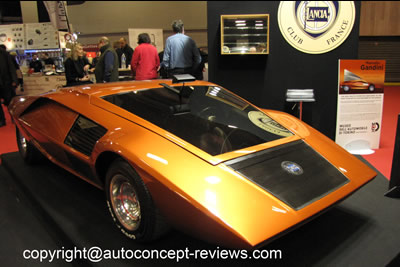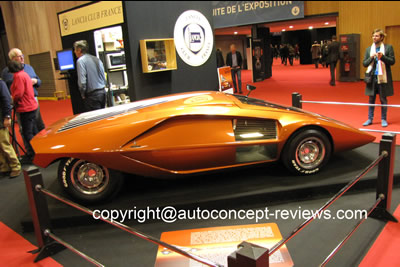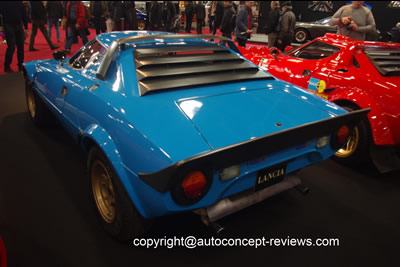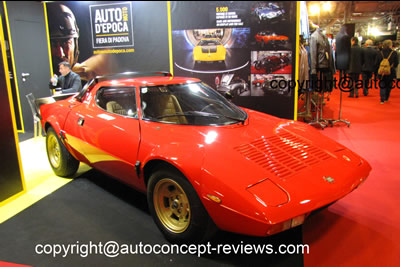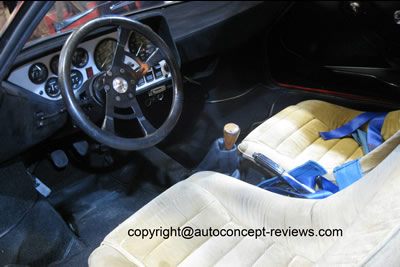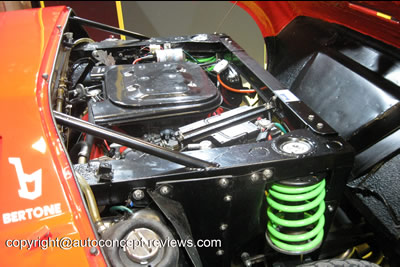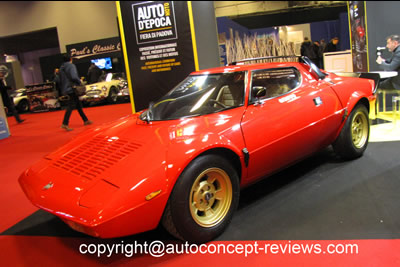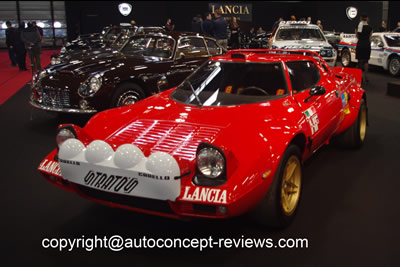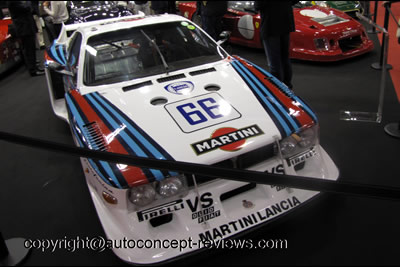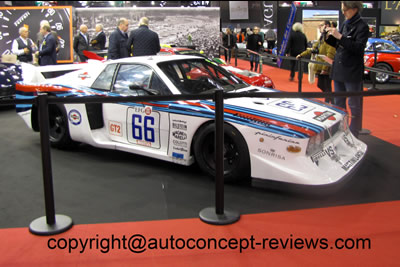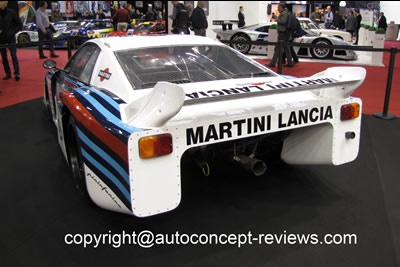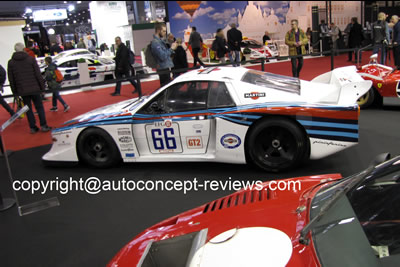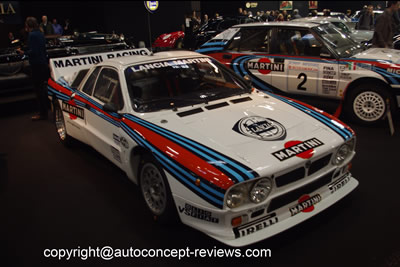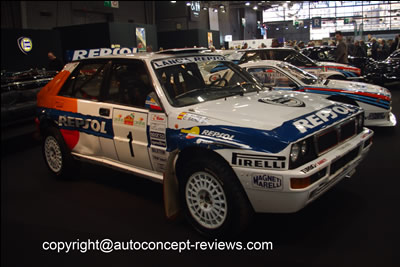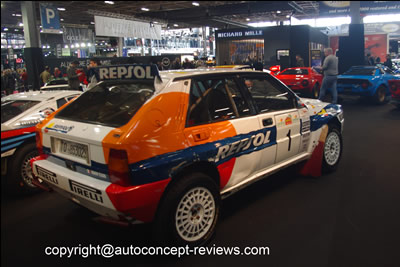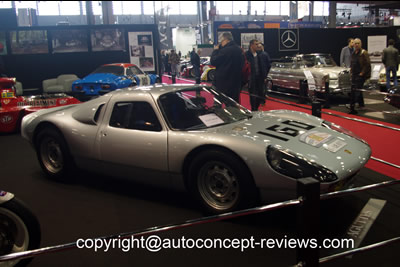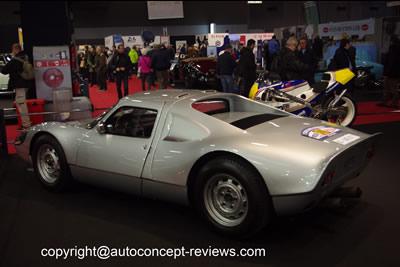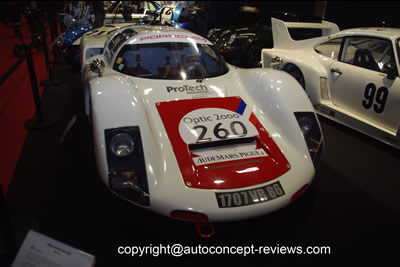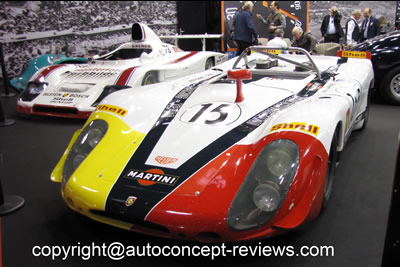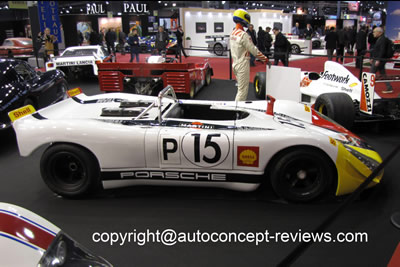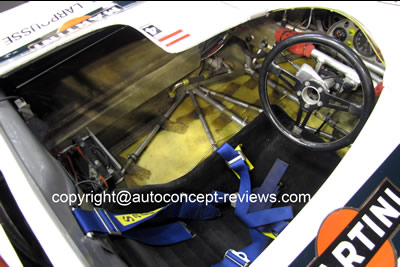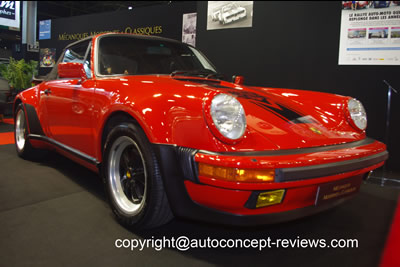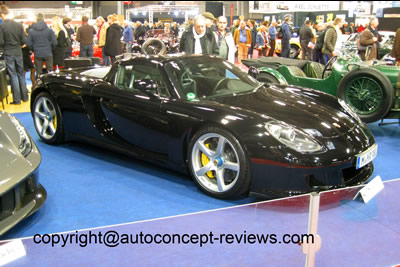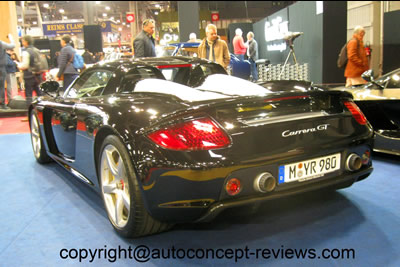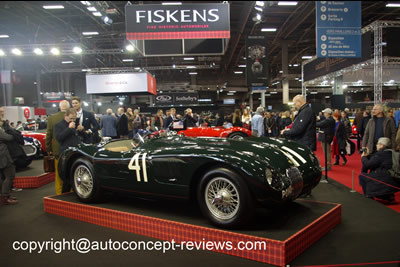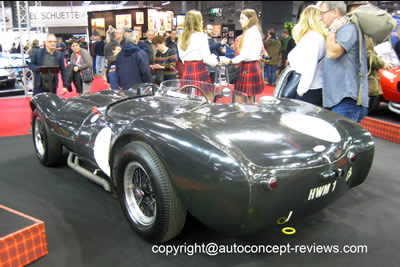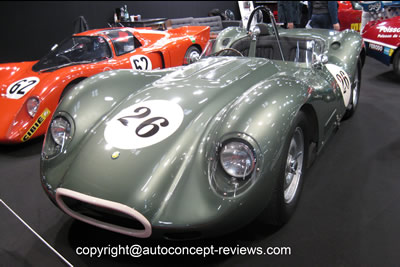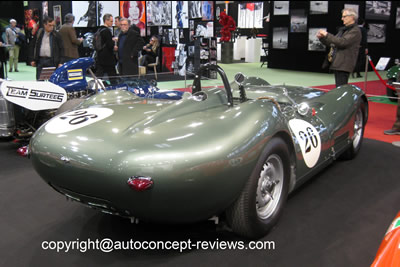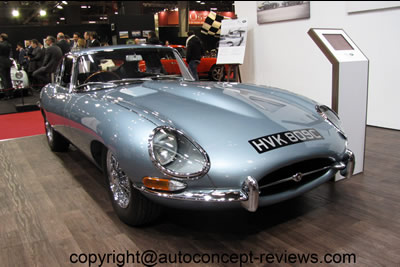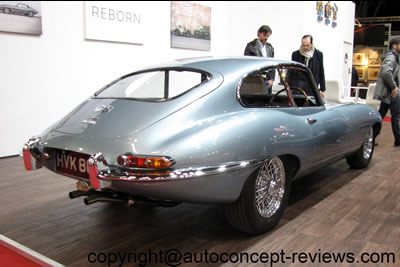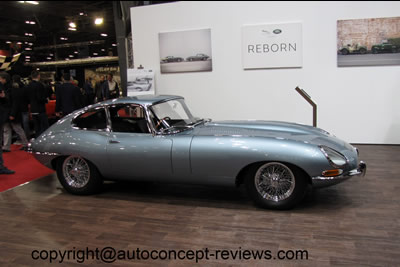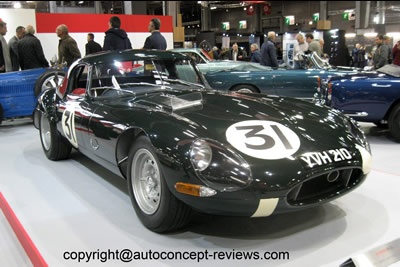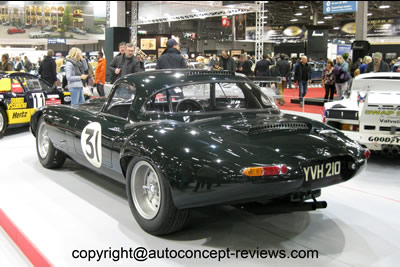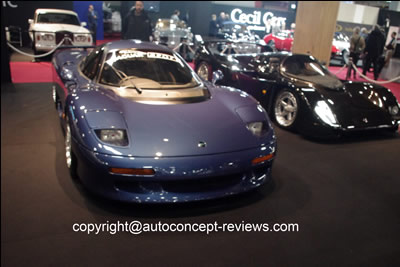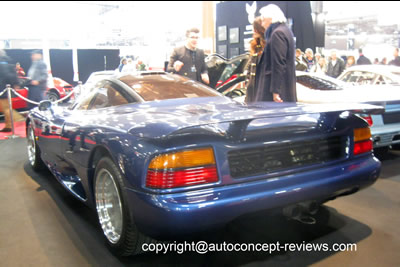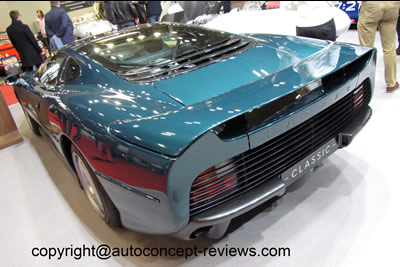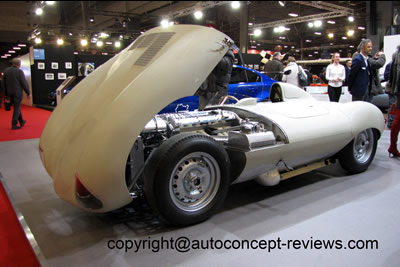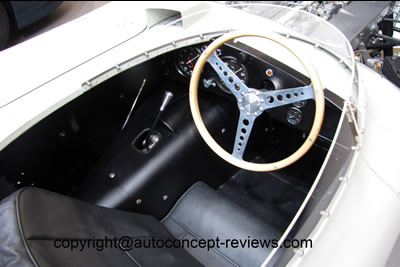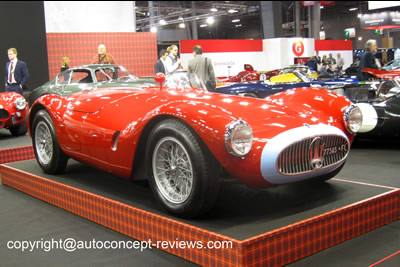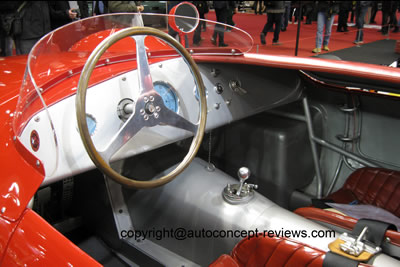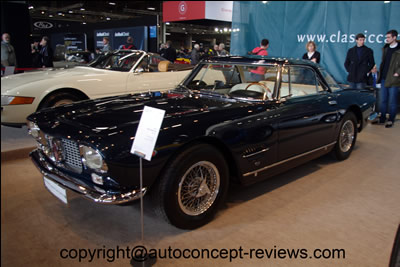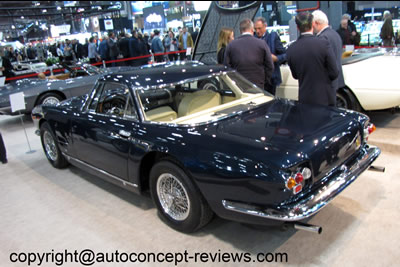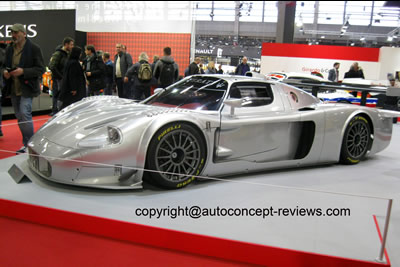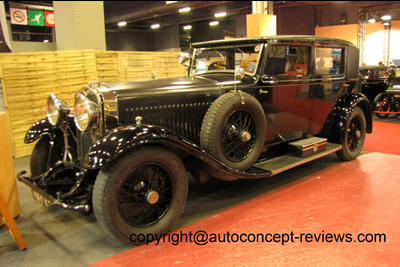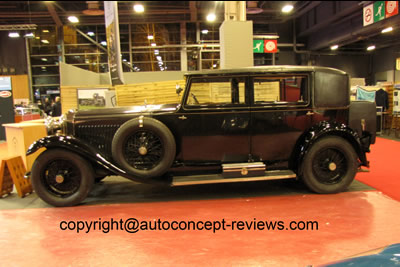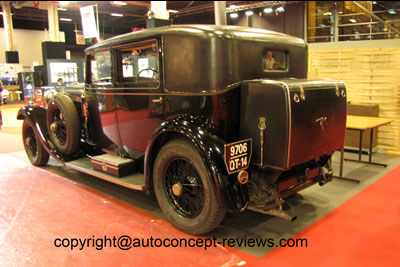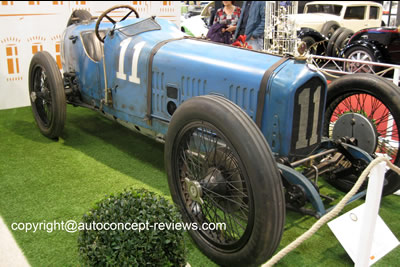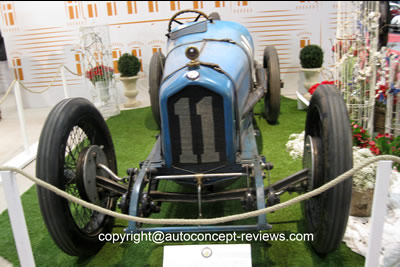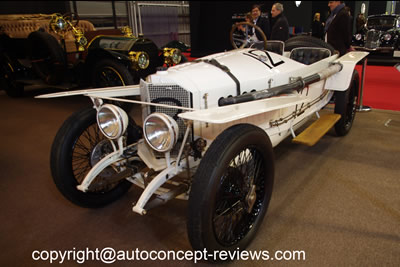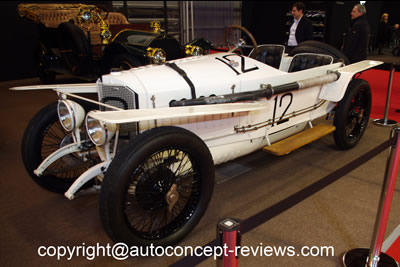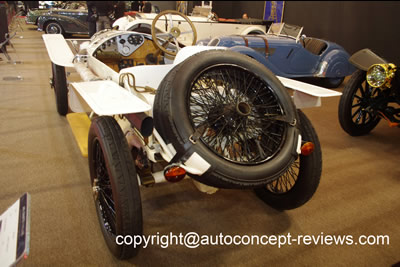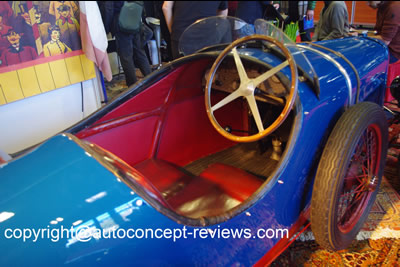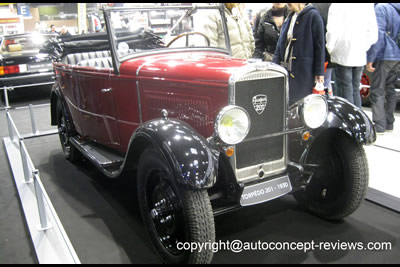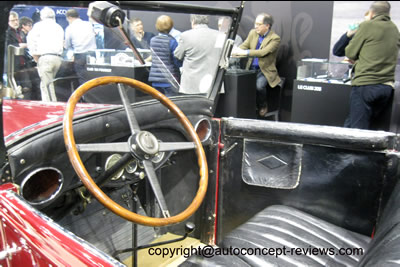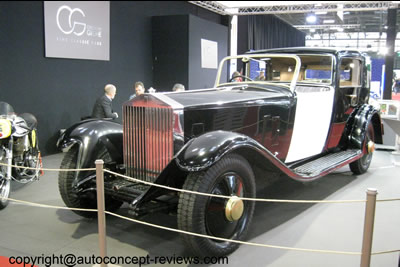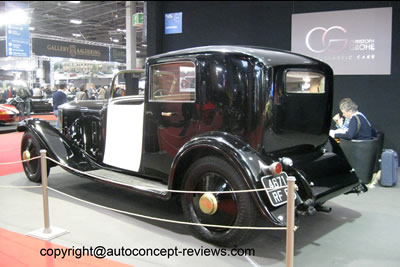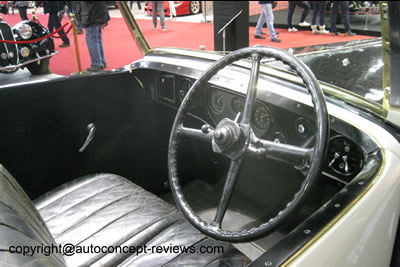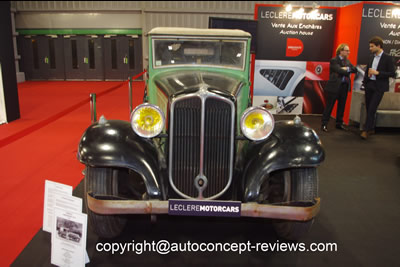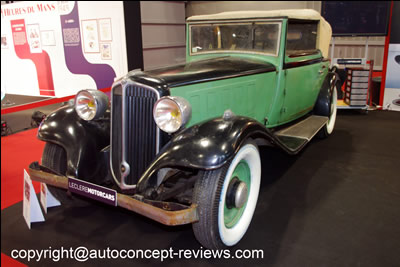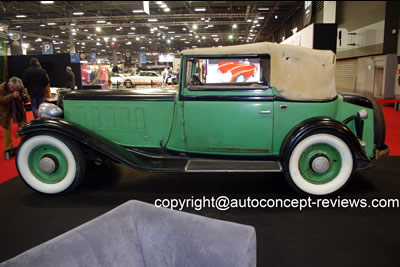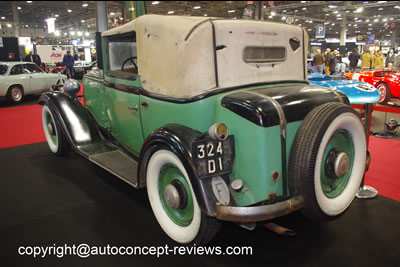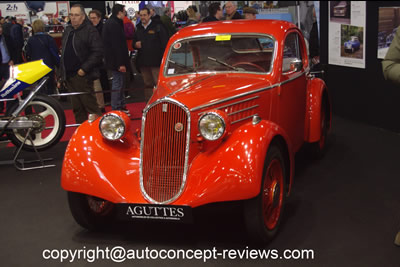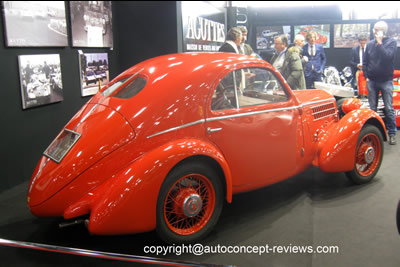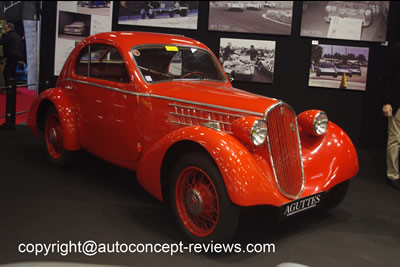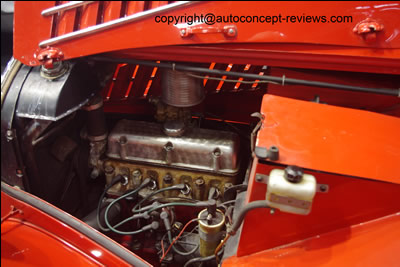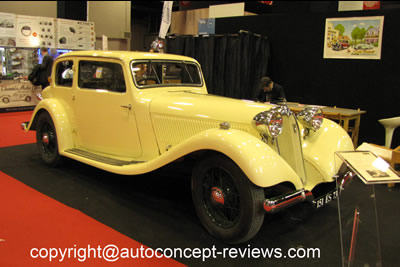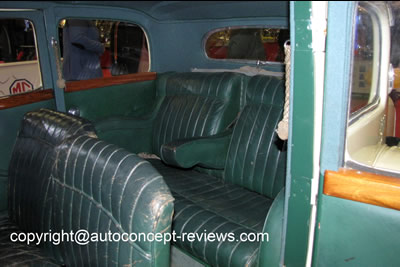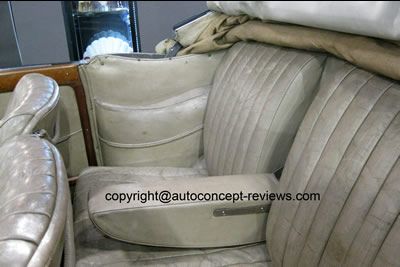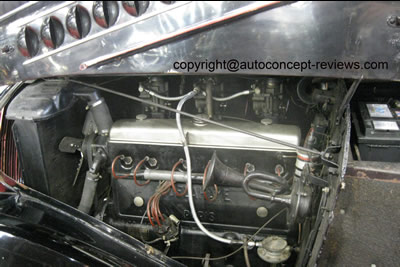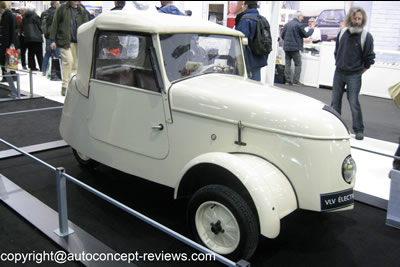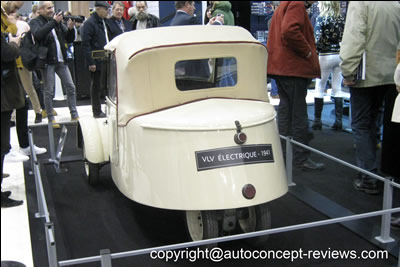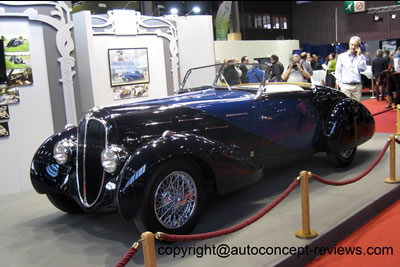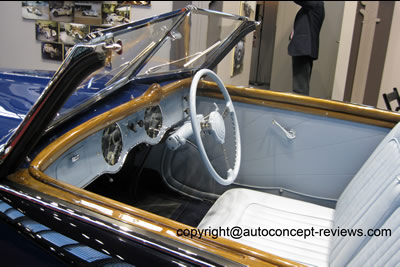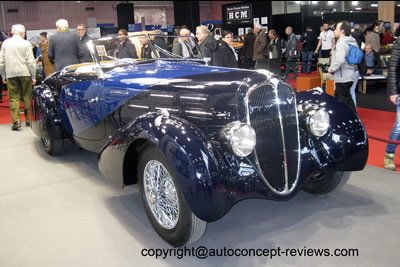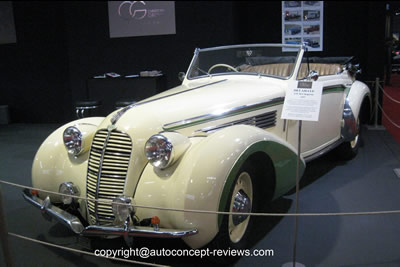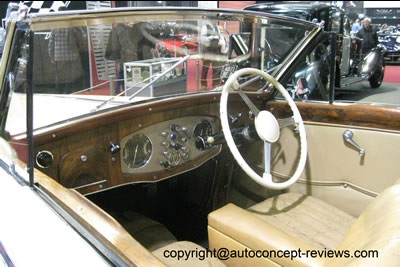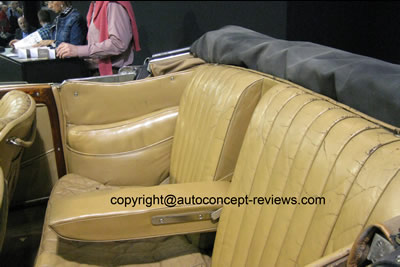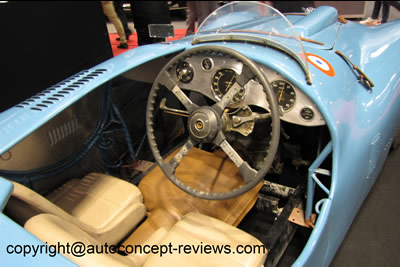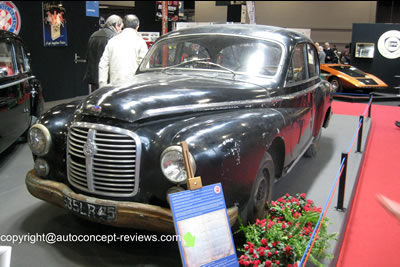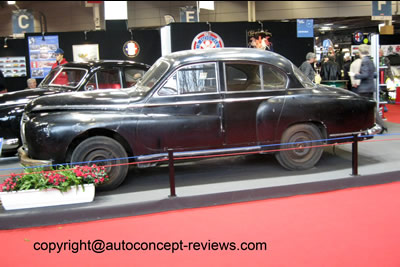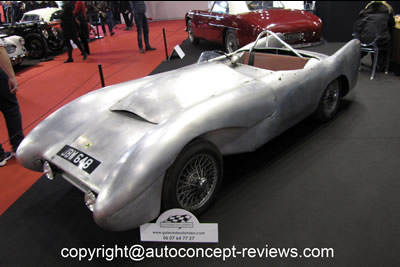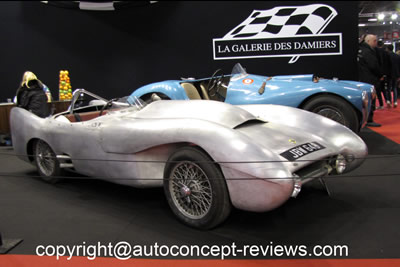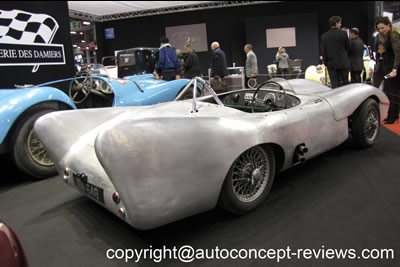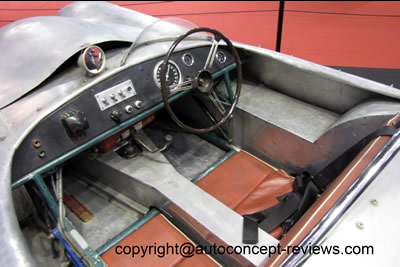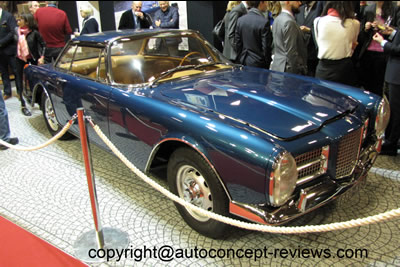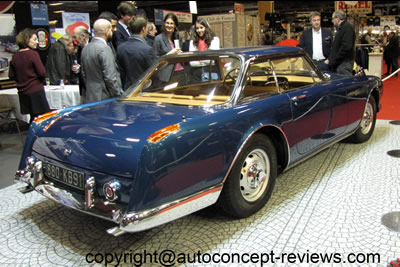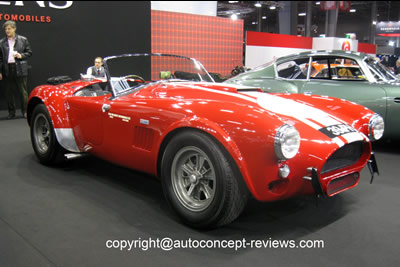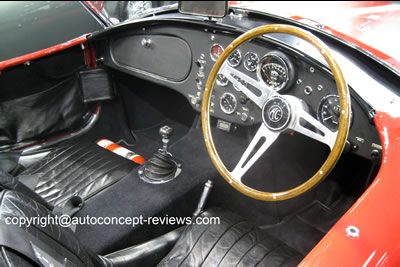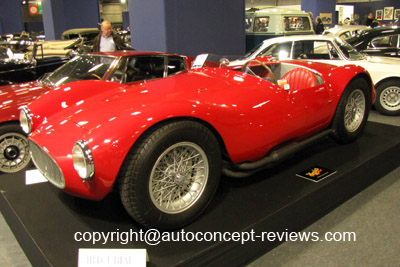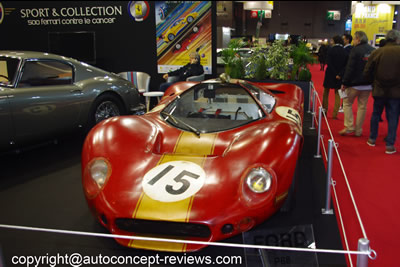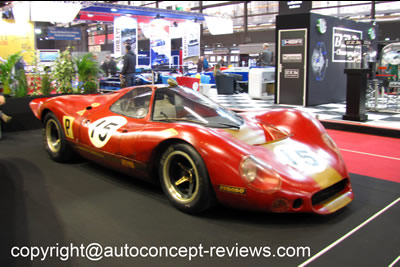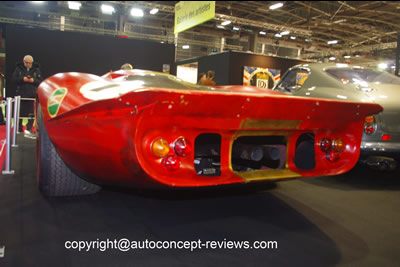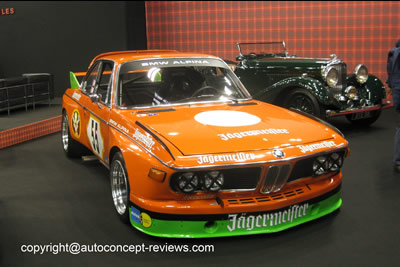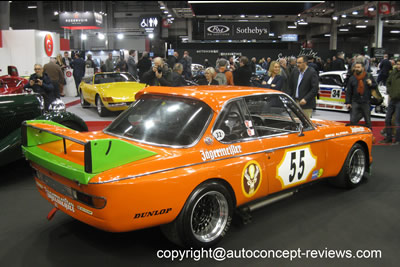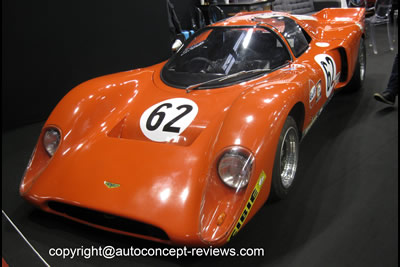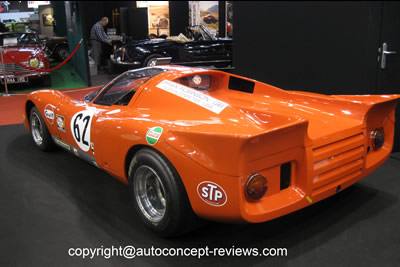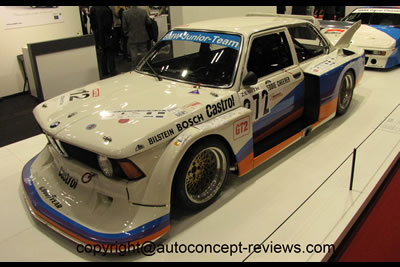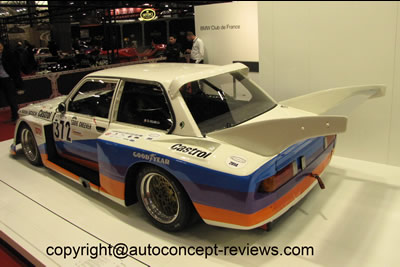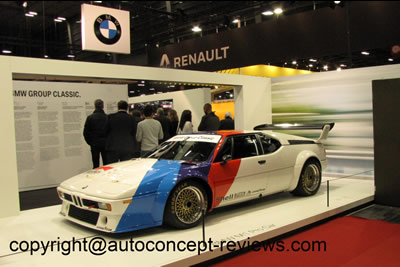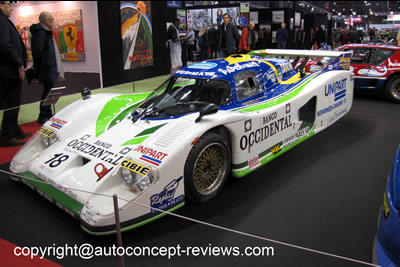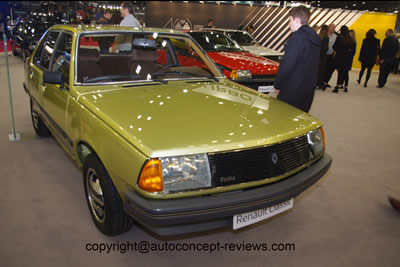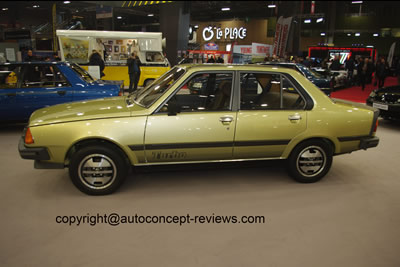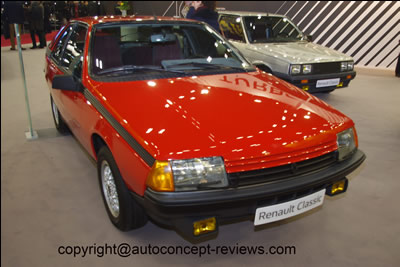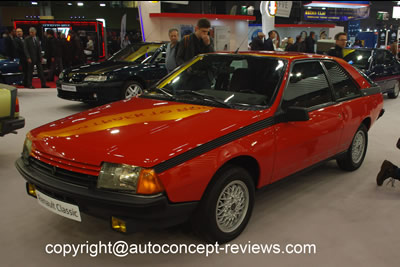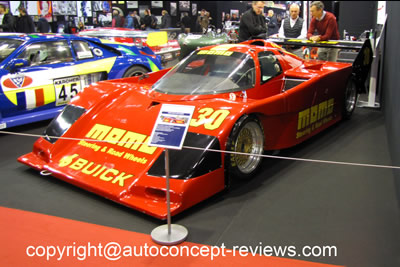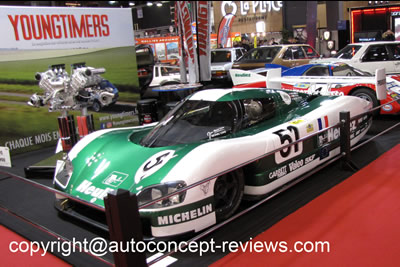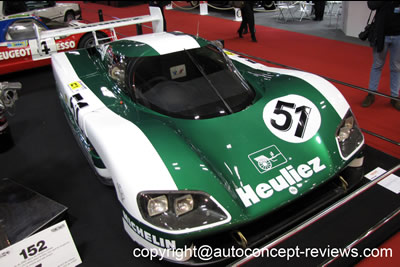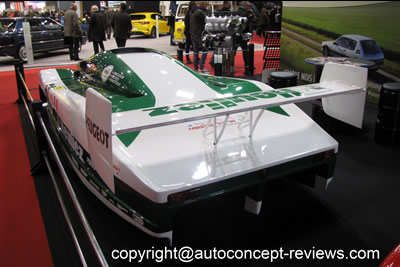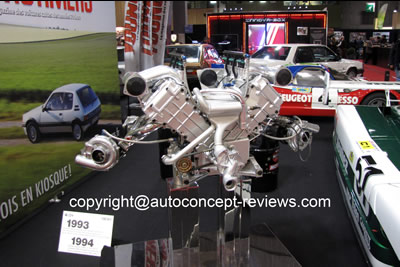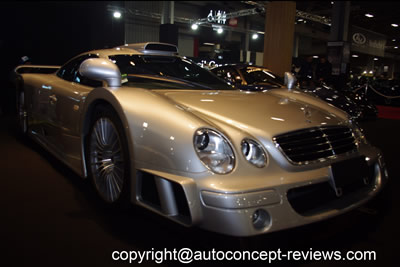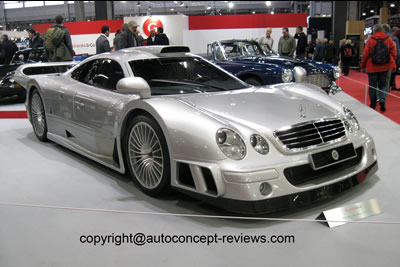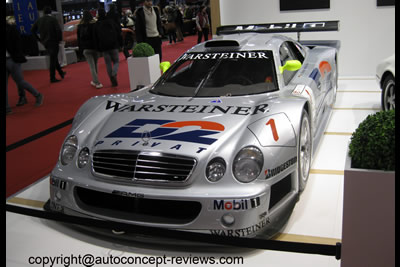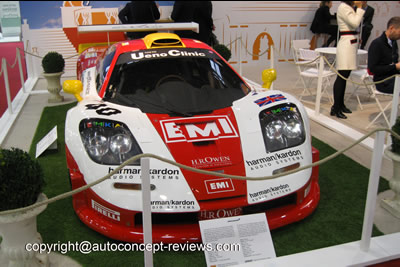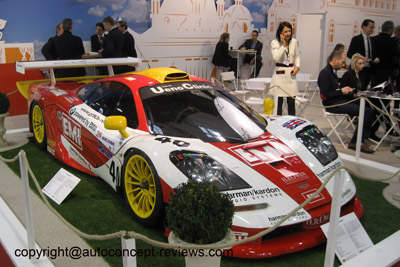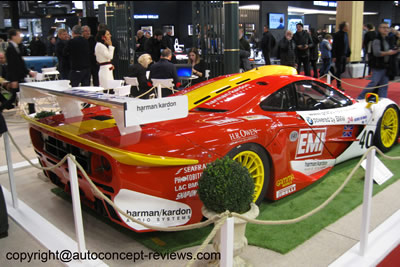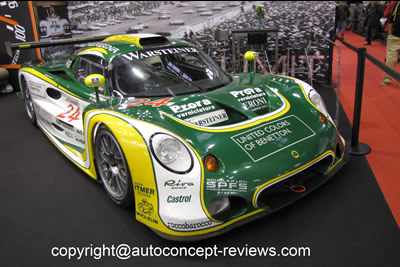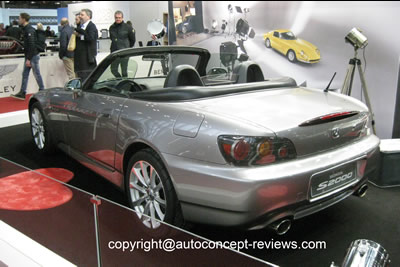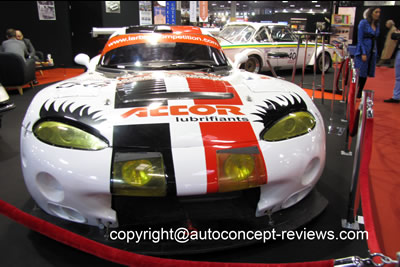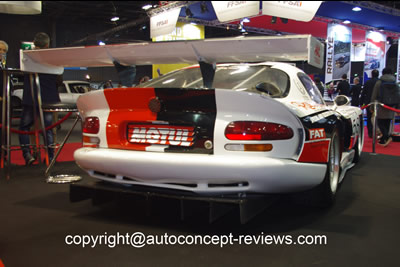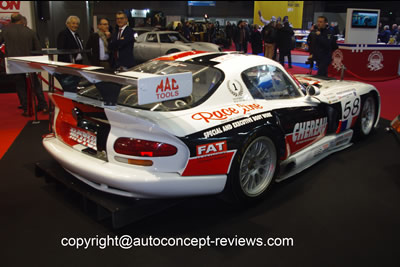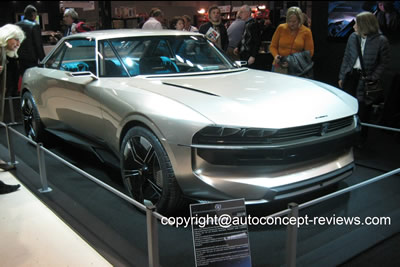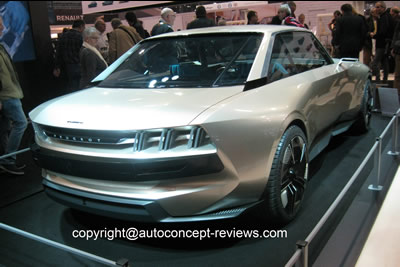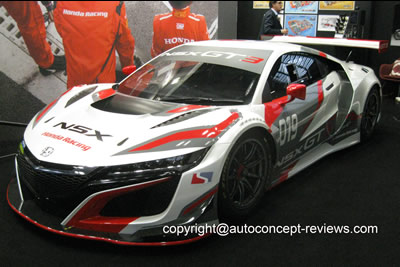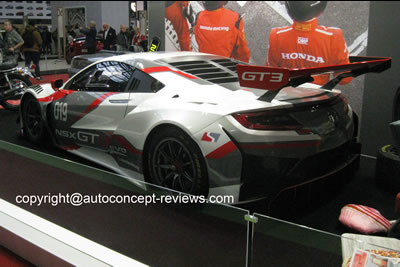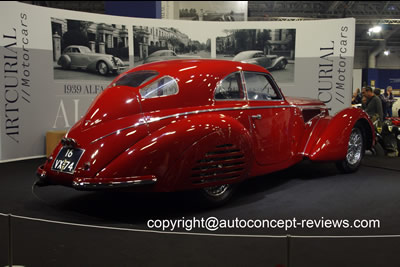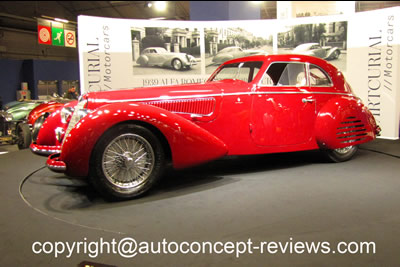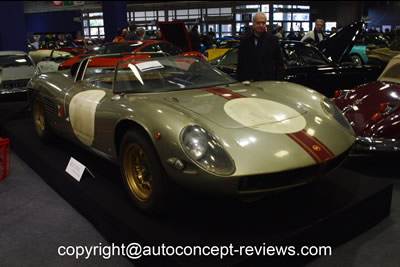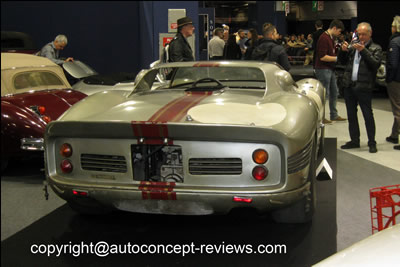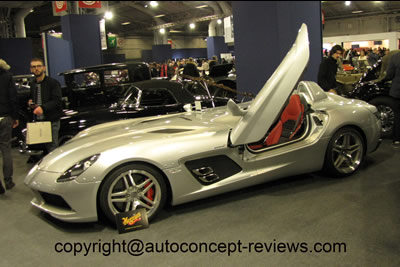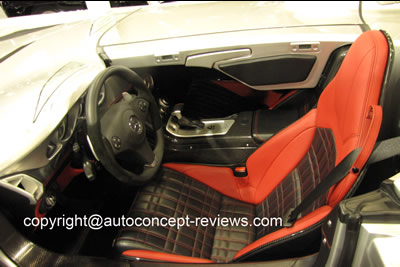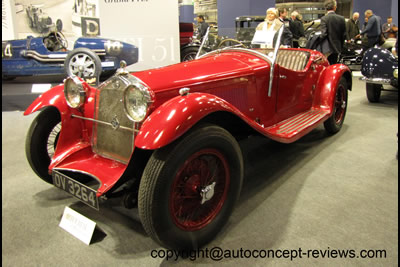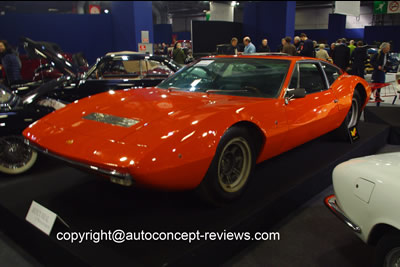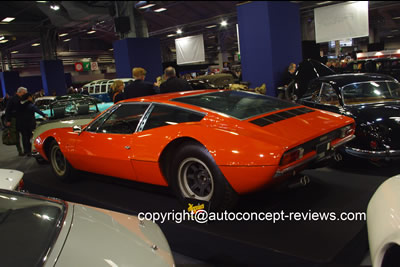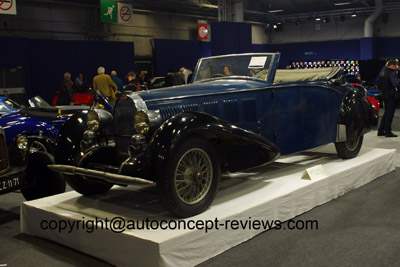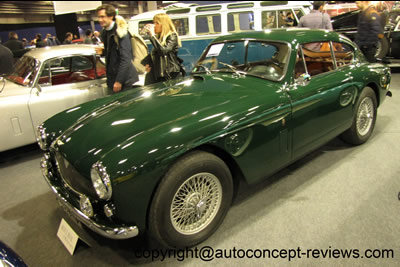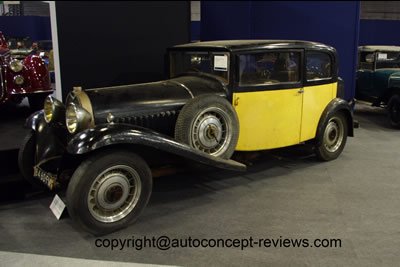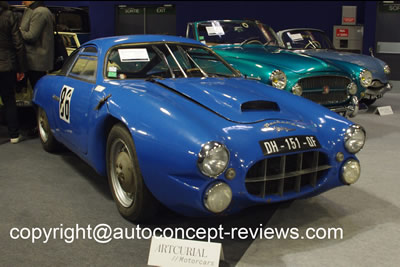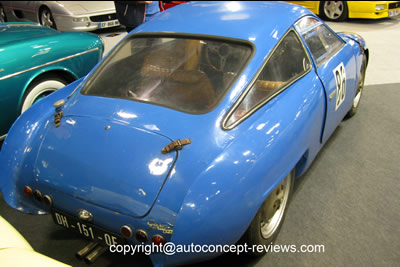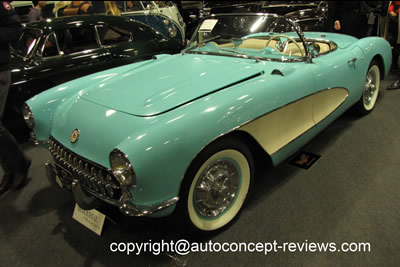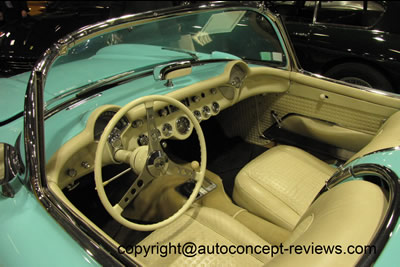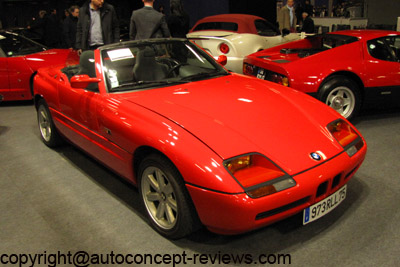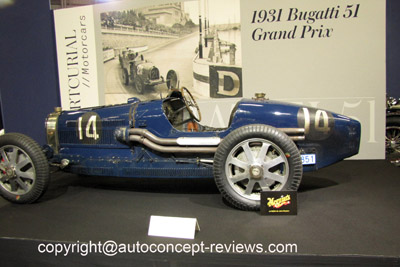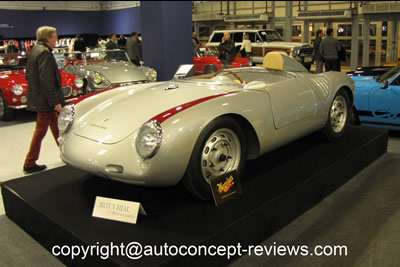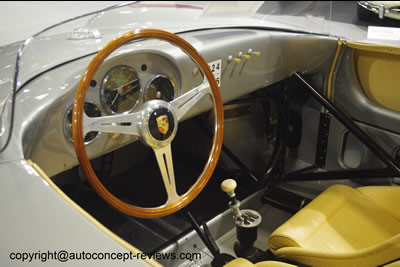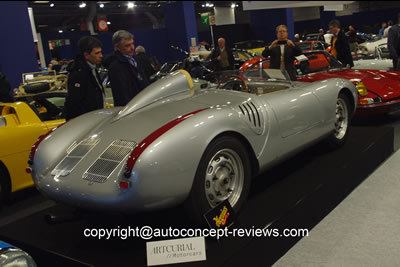1 - Early Horseless Vehicles |
1895 Leon Bollée tricycle - Exhibit : Exhibit National Automobile Museum Compiegne
|
Léon Bollée is the son of famous automobile conceptor Amédée Bollée. In 1895 Léon Bollée developped a tandem seating tricycle with internal combustion engine. The driver was sitting on the back seat. The engine is on the left side of the frame. The patent for the vehicle is placed in December 1895. The tricycle was sold with success not only in France but also in England. Claimed top speed was 30 kph.(18 mph). |
|
1896 De Dion Bouton Tricycle -Exhibit National Automobile Museum Compiegne
|
De Dion Marquis envisioned the limit of the steam engine propulsion and decided to investigate the internal combustion engine. In 1895 he initiated the construction of the soon to be famous De Dion Bouton Tricycle. The production was a success. |
|
| |
1898 Delahaye Type Zero -Exhibit Delahaye Club & OSENAT
|
The 1898 Delahaye Type Zero is the first Delahaye built and is propelled by a single cylinder 1100 cc engine. It is scheduled for OSENAT auction sale in Fontainebleau on March 23rd 2019. |
|
| |
1899 La Jamais Contente Electric Record Vehiche - Exhibit National Automobile Museum Compiegne
|
Jenatzy “ Jamais Contente” 1899 –this vehicle that established a record top speed of 105,879 kph. For the first time ever an automobile could go faster than 100 kph. Camille Jenatzy developed this special electric vehicle and drove it to the record top speed as a promotion for is Company “La Compagnie Internationale des Transports Automobiles” (International Automobile Transportation Company) that operated electric taxis in Paris.. See Jenatzy “ Jamais Contente” 1899 |
|
| |
1900 De Dion Bouton Type G Vis a Vis - Exhibit National Automobile Museum Compiegne and La Teuf Teuf
After the success of the tricycle De Dion Bouton initiated the production of a opposed three seats automobile.The patent for this three seat vehicle was introduced in 1899. It is propelled by a single cylinder engine. See De Dion Bouton Type E 'Vis à Vis' 1900
|
| |
1902 De Dion Bouton K1-Exhibit National Automobile Museum Compiegne
|
| Single cylinder 8 hp 764 cc engine connected to a two speed and rearward gearbox on the differential. Four seats with rear seats entrance by a back door.
|
| |
1902 Gardner Serpollet - Exhibit OSENAT Auction Sale
|
This steam engine 1902 Gardner Serpollet Type F is scheduled for a OSENAT Auction Sale in Fontainebleau.
|
| |
1904 De Dion Bouton Type V - Exhibit La Teuf Teuf
|
The single cylinder engine produces 8 hp for 842 cc capacity. Claimed top speed is 35 kph (21 mph). Four seats vehicle with three speed forward and reverse gearbox.
|
| |
1904 GLADIATOR - Exhibit : Course des Remparts Angouleme
|
The GLADIATOR is propelled by a four cylinder 9.4 Litre engine |
|
| |
1911 Bugatti Type 13 Brescia - Exhibit Pure Sang
|
The first Bugatti Type 13 was built in 1914. The World War interrupted the industrial activity and it is in 1919 that manufacturing restarted. For the 1921 racing season, a development of the 16 valves was produced featuring a built-up ball-bearing crankshaft, roller bearing connecting rods and twin magneto ignition, which secured an outstanding victory on the 8th September 1921 in Brescia when the four team cars of Friderich, De Viscaya, Baccoli and Marco took the first four places in the most important voiturette race of the season. Friderich won in 2 hours 59 minutes and 18 seconds with an average speed of 116 kph. See Bugatti Type 13 Brescia
|
|
| |
1912 De Dion Bouton Type DQ- Exhibit La Teuf Teuf
|
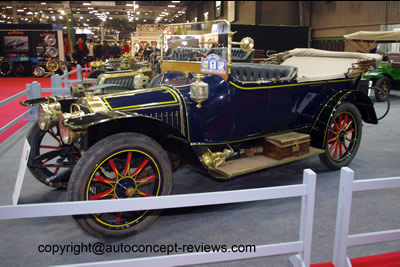 |
 |
| The De Dion Bouton Type DQ is equiped with a 2100 cc 12 hp four cylinder engine. There is a three speed and reverse gearbox. The Type DQ is a four seats torpedo with a claimed top speed of 60 kph (37 mph). |
|
| |
1916 SIGMA Torpedo- Exhibit MOTUL
|
| |
| |
2- 100 Years Anniversary for CITROEN |
1919 Citroen Type A 10 CV- Exhibit Citroen
|
The Citroën Type A Torpedo (Open Tourer) is presented as the first mass-produced model in Europe. It was the first European car sold with electric starter, electric lighting and a spare wheel. 28.400 models have been produced between 1919 and 1921. For further details see Citroën Type A Torpedo 1919 |
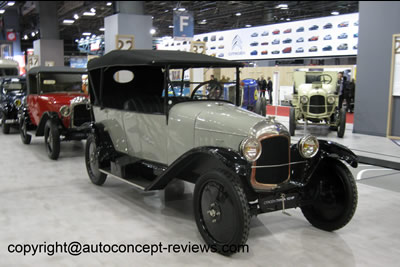 |
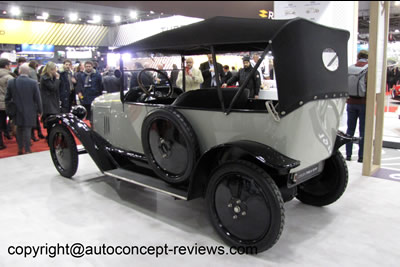 |
|
| |
1922 Citroen Type B2 Autochenille - Exhibit Citroen |
| This P17 half-track vehicle was called the « Scarabée d’Or III’ (Golden Beetle). Georges-Marie Haardt used it as the command vehicle in the third Citroën expedition. The Croisère Jaune expedition was divided into two groups : the China Group and the Pamir Group. The Pamir group, equipped with P17s of this type, took 315 days (4 April 1931 to 12 February 1932) to travel from Beirut to the western gate of Beijing, a distance of 12115 km. For further details see Citroën half-track Type P17 1931 Croisère Jaune - based on C4F |
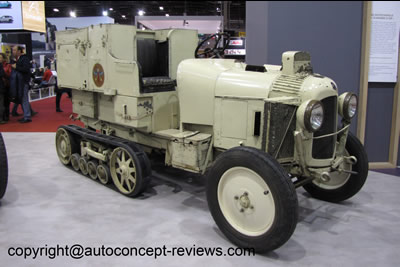 |
 |
|
| |
|
| |
1931 Citroen C6G- Exhibit : Citroen
|
The Citroen C6 was produced from 1929 till 1933. Combining all versions, 61.273 cars were produced in that period . For further details see Citroen C6 Hard Top 1929 |
|
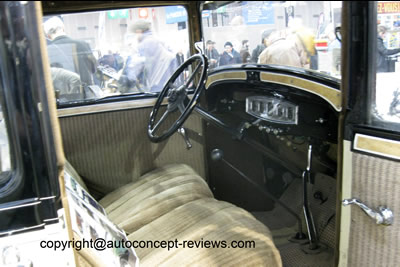
|
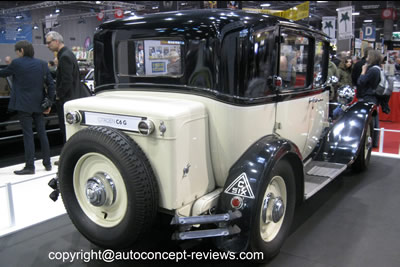
|
|
| |
1932 Citroen Record Petite Rosalie- Exhibit Citroen |
| From March 15 to July 27 1933 at Monthléry Track (France) a Citroën 8CV Petite Rosalie covered 300.000 kilometers in 134 days at the average speed of 93 km/h. At that time, it was the world record of the greatest distance achieved and the longest running time for a car. For further details see Citroën 8CV « Petite Rosalie » 1933 |
 |
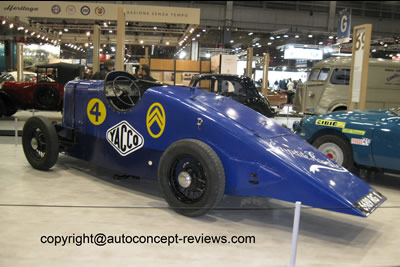 |
|
| |
|
| |
1947 Citroen 2 CV - Exhibit Citroen |
| The Citroen 2CV was introduced in 1948. 5.114.940 examples were produced between 1948 and 1990 at different sites Levallois and Ivry in France, Vigo in Spain and Mangualde in Portugal. The engine capacity evolved from 435 cc to 602 cc. The vehicle in exhibit is a development prototype dated 1947. See also Citroen 2 CV 1939 Prototype |
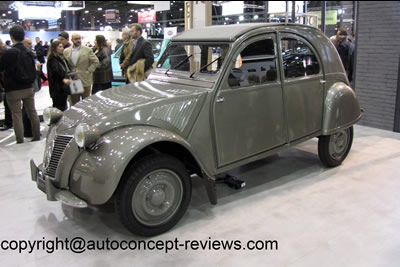 |
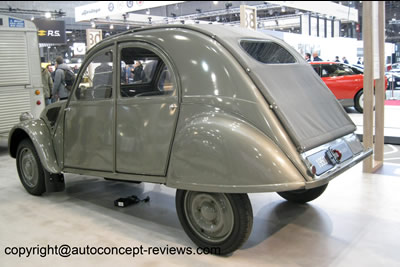 |
|
| |
1947 Citroen Type H - Exhibit Citroen
|
At the end of the Second World War, France needed to rebuild, and the Type H became the essential partner for professionals of every kind.
Launched in 1947 and on sale the following year, the type H featured the same advanced layout as the Traction Avant and was the first mass produced front wheel drive van. Without drive shaft or bulky rear axle taking up room, the load area was flat, roomy and easy to use. The Type H was also lighter than traditional vans. The production ended in 1981. |
|
|
| |
1956 Citroen C10 Concept -Exhibit Citroen
|
| The Citroen C10 is a research prototype completed two years before the unveiling of the revolutionary Citroen DS 19. It illustrates research for applying aeronautic techniques for the production of light streamlined sedan. The body of the C10 is made of aluminium. The C10 utilizes a Citroen 2 CV powerplant. The total weight is announced at 382 kg. It can carry four passengers. |
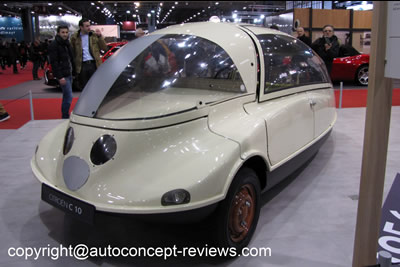 |
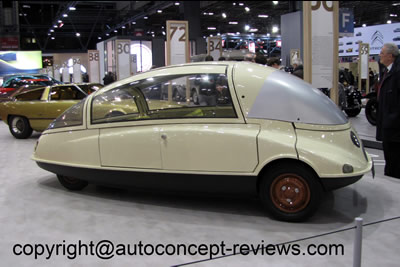 |
|
| |
1959 Citroen DS 19 -Exhibit Citroen
|
With the great Traction Avant still selling very well, Citroen was hard at work on its replacement. Its code name, VGD stood for Voiture à Grande Diffusion or Mass Market car, but its eventual name would be more evocative...
Styled by the great Italian designer Flaminio Bertoni, the DS or 'goddess' was the undisputed star of the 1955 Paris Motor Show, where its elegant aerodynamic'flying saucer' form stunned onlookers. Inside this futuristic body was a luxurious interior and the whole car was packed with technological innovations such as power steering and disc brakes. Foremost was all-around hydropneumatic suspension, which would amaze everyone who ever journeyed in a DS. |
|
1960 Citroen DS 19 Coupe Le Paris et 1966 Berline Majesty by Chapron- Exhibit Lukas Huny
|
 |
 |
| 1960 Citroen DS19 Coupe Le Paris by CHAPRON |
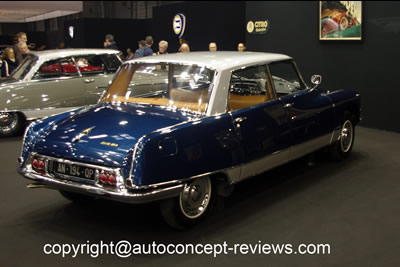 |
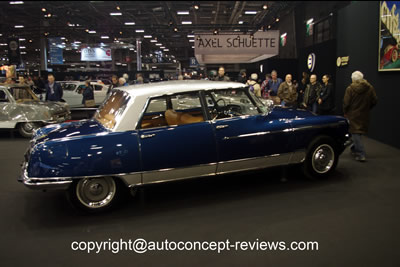 |
| 1966 Citroen DS19 Berline Majesty by Chapron |
|
| |
1967 Citroen DS 21 Pallas - Exhibit Citroen
|
| The Citroën DS is a front-engine, front-wheel-drive automobile that was manufactured and marketed by Citroen from 1955 to 1975 in sedan, wagon/estate and convertible body configurations. Citroën sold 1,455,746 examples, including 1,330,755 built at the manufacturer's Paris production plant. Noted for its aerodynamic, futuristic body design and innovative technology, the DS was equiped with self levelling hydropneumatic suspensions. |
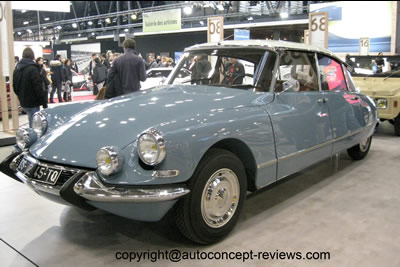 |
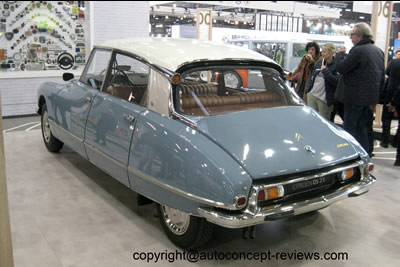 |
|
1969 Citroen AMI 6 Service with Glass- Exhibit Citroen
|
|
| |
1969 Citroen AMI 8- Exhibit Citroen
|
|
1969 Citroen DS 21 Morocco Rally- Exhibit Citroen
|
|
| |
1969 MEHARI- Exhibit Citroen
|
The Citroen Mehari is the first production model equiped with an ABS polymer body. The car was designed by Roland de la Poype and produced by SEAB for Citroen during 19 years. The Mehari was built on a Dyane 6 platform and was essentially a multi-purpose vehicle capable of riding on different soils. It was particularly rust-free and could easily be used near the sea. It was produced between 1968 and 1987 at 144.953 examples. The engine is the 602 cc air cooled flat twin producing 29 hp. |
|
| |
1971 Citroen SM Morocco Rally - Exhibit Citroen
|
|
| |
1972 Citroen Camargue by Bertone- Exhibit Citroen
|
| The stunning prototype was unveiled at the Geneva Motor Show in Spring 1972. Drawing inspiration from the GS launched two years earlier, it retained many of the car's innovative technical elements, including the engine, steering and famous hydropneumatic suspension. Its styling was completely new and was a true departure for the brand. Here was the first collaboration between Citroen and the great Italian design company Bertone: a relationship that would bring out the best in both. The camargue featured a glazed rear cell, a panoramic windscreen and an arch to strenghten the slender passenger compartment. The effect was strikingly sporty. Other radical details included the headlights, which influenced the later BX model. The Camargue was an important concept, because although it did not become a production reality, it marked the start of a fruitfull relationship between Bertone and Citroen, and helped to shape a host of future models, from the BX to the XM, ZX and Xantia. |
|
| |
1973 Citroen 2 CV Africa Rally - Exhibit Citroen
|
|
| |
1973 Citroen DS 21 Coupe Le Mans and DS23 Berline Lorraine by CHAPRON- Exhibit Lukas Huni
|
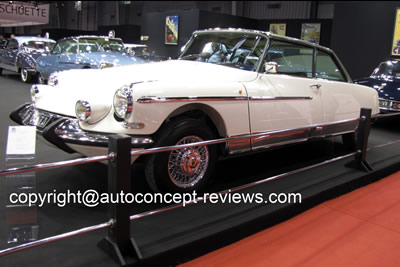 |
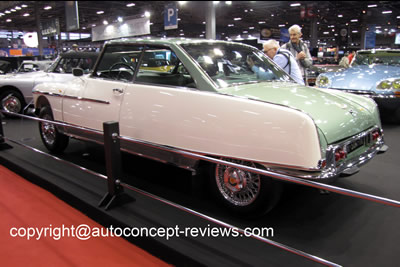 |
1973 Citroen DS 21 Coupe Le Mans by CHAPRON |
 |
 |
| 1973 Citroen DS 23 Berline Lorraine by CHAPRON |
|
| |
1980 Citroen KARIN Concept - Exhibit Citroen
|
Just weeks after becoming head of styling at Citroen, Trevor Fiore revealed the KARIN prototype at the 1980 Paris Motor Show.
A truly bold concept car, it had a sweeping pyramidal form and an interior designed for three occupants. The driver's seat was positioned centrally and slightly further forward than the two passengers, and all main controls were close to the steering wheel, which was adjustable and had the feel of a joystick. This was no static display vehicle, as it had a 4 cylinder engine and hydropneumatic suspensions. |
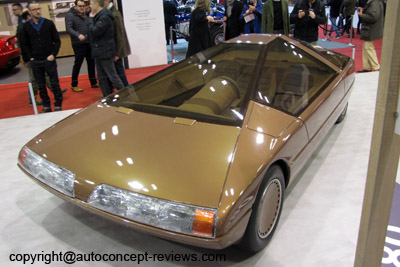 |
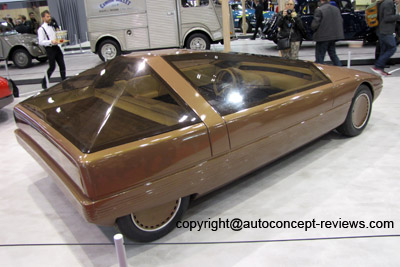 |
|
| |
1984 Citroen CX 25 Prestige - Exhibit Citroen
|
The Citroen CX was produced in more than 1.1 million units between 1974 and 1991. |
|
| |
1988 Citroen ACTIVA I Concept - Exhibit Citroen
|
| The Prototype ACTIVA I was introduced at the Paris Mondial Show in 1988. It was aresearch vehicle for aerodynamic shape and various advanced driving technologies, like four wheel steering. The car will not be produced but its design influenced the shape of production models like the XM or the Xantia. |
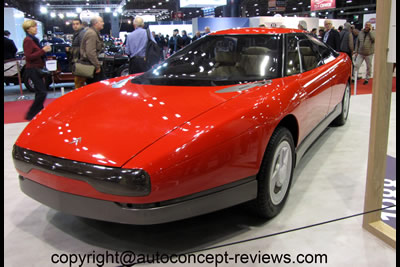 |
 |
|
| |
1989 Citroen XM - Exhibit Citroen
|
The Citroen XM was produced between 1989 and 2000. |
|
| |
1992 Citroen ZX Rally Raid - Exhibit Citroen
|
| Sixty years after the famous Croisière Jaune with the Autochenille, Citroen launched the ZX Rally Raid in the Paris Moscou Pekin. |
 |
 |
|
| |
1994 Citroen Xanae Concept - Exhibit Citroen
|
Concept cars always try to show glimpses of the future, but the Xanae went much further. It articulated automotive evolution and demonstrated where innovative vehicles were heading.
A revelation at the 1994 Paris Motor Show, it focused most on driver and passenger comfort. The first true compact MPV, Xanae felt like a welcoming living room, complete with rear hinged doors without a central pillar, pivoting front seats, plus a central rear seat that folded down to provide a table. The current core Citroen principle of modularity starts here. Adding to the sense of wellbeing and space was the exceptionally large glazed area, with the windscreen sweeping up into the roof pannel. A whole range of driving aids were easily accessed via two LCD screens and positioned just where they could safely be used. With the mechanical underpinnings from the Xantia, there was nothing to stop this master class of comfort and versatility from developing into a real production car. The finishing touches were applied and in 1999 the Xiantia Picasso was launched to an appreciative public. It enjoyed a very successful career. |
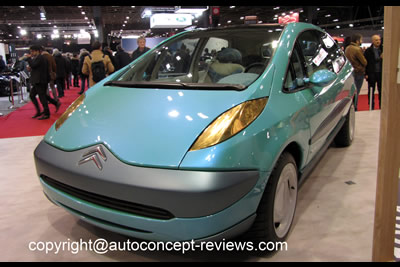 |
 |
|
| |
1999 Citroen XSARA Kit Car - Exhibit Citroen
|
|
| |
2000 Citroen OSMOSE Concept - Exhibit Citroen
|
Always seeking ways to redefine usability, Citroen revealed a very futuristic prototype at the Paris Motor Show in 2000. It aimed to create a new kind of relationship between drivers and pedestrians.
Here was a concept car that asked fundamental questions about responsible use of the car as a means of sharing transport. Before a journey, the driver would display their availability and destination on a panel, allowing them to pick up people as they went. The journey information could additionally be accessed by mobile phone. Osmose also had a radical layout, there were three seats in the front, with the driver positioned in the middle and slightly further forward than the passengers on each side. In the rear, a sliding panel revealed a two seats bench that faced backwards. The overall shape of Osmose was a real departure. Because of its height and similar front and rear designs, it was essentially cubic, like a light filled mobile living space. Equipped with audio and video systems and a frontal pedestrian airbag. Osmose was powered by hybrid technology called ZEV, which stood for Zero Emission Vehicle. Overall lenght 3.35 m; width 1.75 m ; height 1.7 m |
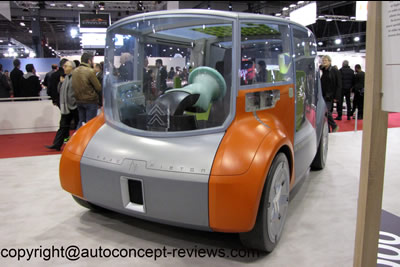 |
 |
|
| |
2006 Citroen C-Metisse Concept - Exhibit Citroen
|
The Citroen C-Metisse concept car is a four seater coupe with striking design illustrating Citroen new styling with extreme sober contours.
Propulsion is based on similar principle as C4 hybrid prototype introduced in early 2006 with a diesel engine at the front and two electric motors at the rear.
The vast interior has four separated seats covered with leather. Driver headrest is supported from the roof. There are four doors tilting forward at front and rearward at the back for easy access to the cabin.
Length is 474 cm, width is 200 cm and height is a low 124 cm. Weight is 1400 kg including batteries.
The body aerodynamic shape was developed in wid tunnel and has Cx of 0,30.
Front Diesel engine is V6 HDI FAP connected to 6 speeds automatic transmission. Claimed power is 208 hp. There are two 15 kW electric motors in the rear wheels. See Citroen C Metisse Concept car 2006 |
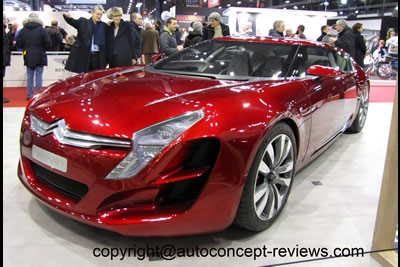 |
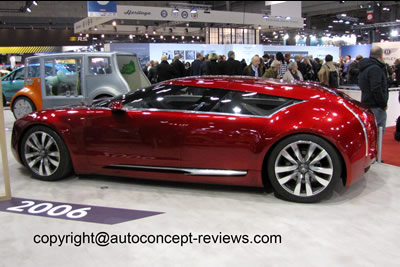 |
|
| |
2007 Citroen C4 WRC - Exhibit Citroen
|
| The Citroen C4 WRC was developed in 2006 for competing in the 2007 World Rally Championship (WRC). The Citroen C4 WRC replaces the Xsara WRC, winner of three world manufacturers crowns between 2003 and 2005. The Citroen C4 WRC was the car driven by Sebastien Loeb to win its fourth world rally driver crown.
For further details see Citroen C4 WRC 2007 |
 |
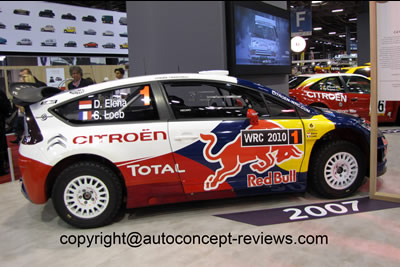 |
|
| |
2008 GT by Citroen - Exhibit Citroen
|
| With the Citroen Gran Turismo Concept, or GTbyCITROËN, Citroën becomes the first vehicle manufacturer to cross over the virtual worlds: an original take on a road car, GTbyCITROËN is a style replica of a vehicle from the digital world. The car is the result of a partnership between Citroen and Polyphony, designer of the driving simulation game Gran Turismo 5 on Playstation 3. In the game, GTbyCITROËN features an electric drive train powered by a fuel cell with no pollutant emissions. It is a car designed to square up to the strongest competition. See Citroen Gran Turismo Concept 2008 : GTbyCITROËN |
 |
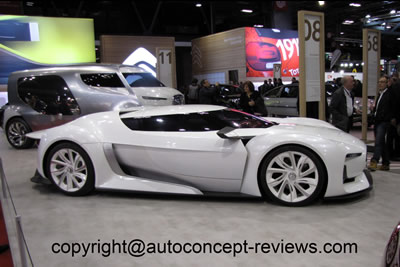 |
|
| |
2011 Citroen TUBIK Concept - Exhibit Citroen
|
| The Citroen Tubik Hybrid4 Concept, a 9-seater vehicle whose styling and characteristics reflect the prestige cues of a modern saloon. Tubik was inspired by CITROËN’s renowned Type H, fondly referred to by the general public as the “TUB” (the name of its predecessor). CITROËN design teams gave Tubik distinctive, offbeat styling, with colours and materials that aim to meet the highest standards in sophistication and comfort. For further details see Citroen Tubik Hybrid4 Concept 2011 |
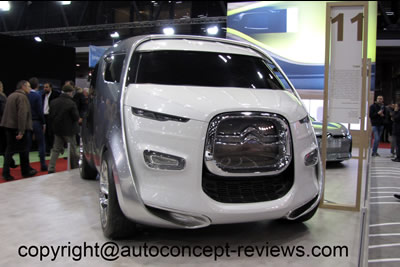 |
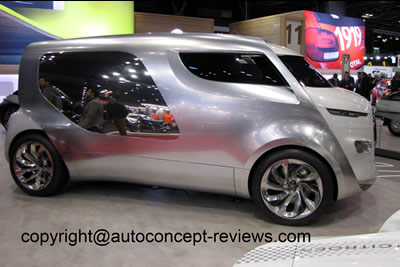 |
|
| |
| CITROËN entered the FIA World Touring Car Championship in April of this year, demonstrating once more its ability to address new sporting challenges. Today, CITROËN C-Elysée WTCC is No. 1 in the Manufacturers’ rankings. This championship has a strong following in Asia and Latin America and is an opportunity for CITROËN to build its international renown. For further details see Citroen C-Elysee WTCC 2014 - World Champion |
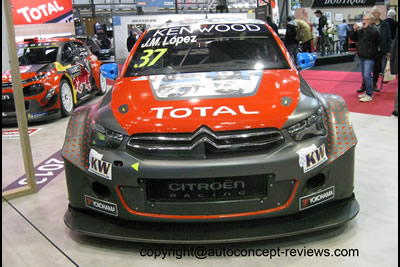 |
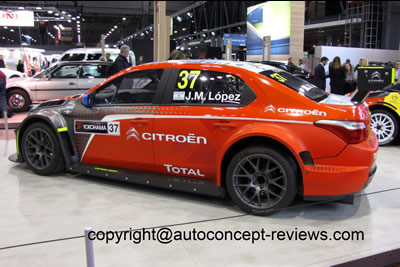 |
|
| |
2016 Citroen CEXPERIENCE Concept - Exhibit Citroen
|
| Citroen revealed the Citroën CXPERIENCE CONCEPT that will be introduced at the Paris Motor Show MONDIAL 2016 in the large hatchback segment.With its distinctive body style, this new and stunning concept illustrates the benefits of the Citroën Advanced Comfort® programme. For further details see Citroën CXPERIENCE Plug-in-Hybrid Concept 2016 |
|
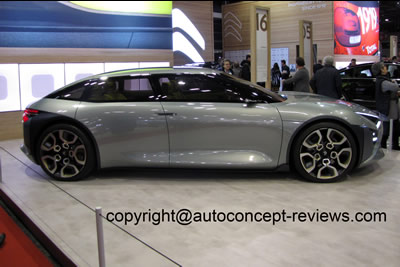 |
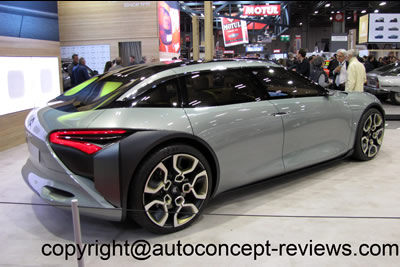 |
|
2017 Citroen C3 WRC- Exhibit Citroen
|
One month before the 2017 FIA World Rally Championship gets underway at Rallye Monte Carlo, Citroën Racing officially unveils its C3 WRC in Abu Dhabi. Complying with the new FIA regulations, which sees the introduction of a new generation of World Rally Cars, the C3 WRC heralds the return of Citroën, with eight manufacturers’ titles and no fewer than 96 wins to the brand’s name. For the 2017 season, the Citroën Total Abu Dhabi WRT will enter between two and four C3 WRCs for its crews; Kris Meeke/Paul Nagle, Craig Breen/Scott Martin, Stéphane Lefebvre/Gabin Moreau and Sheikh Khalid Al Qassimi/Chris Patterson. For further details see Citroën C3 WRC 2017 |
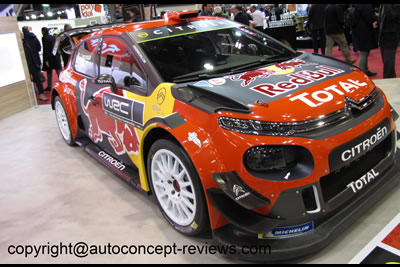 |
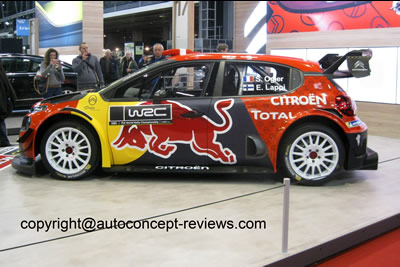 |
|
|
3 -Selection of Single Seat Racing Cars |
| |
1948 Maserati 4 CLT - -Exhibit Holdmayer
|
| The Maserati 4 CLT exhibited was raced by Juan Manuel Fangio |
 |
 |
|
| |
1950 BRM Type 15 with Supercharged V16 1500 cc 600 hp engine - -Exhibit Museum of BEAULIEU |
| The BRM Type 15 was equipped with a 1500 cc V16 supercharged engine producing 600 hp at 12.000 rpm. |
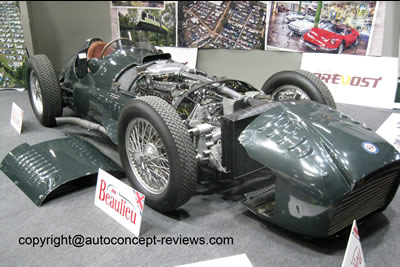 |
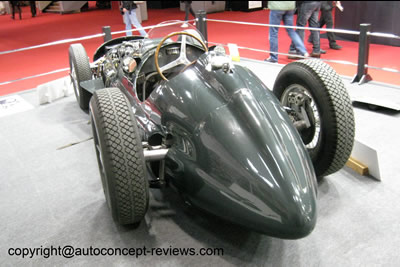 |
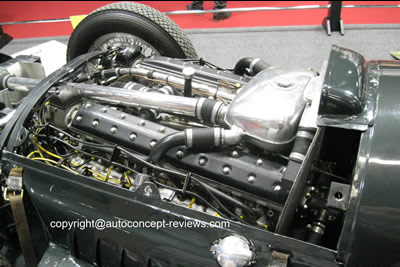 |
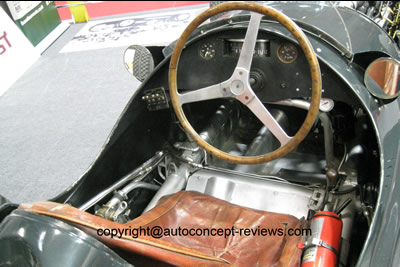 |
|
| |
1955 Maserati 250 F - Exhibit AUXIETRE & SCHMIDT |
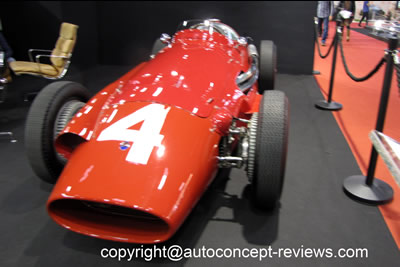 |
The Maserati 250F is considered by many to be the most successful and most beautiful Grand Prix car in history. The Maserati 250F was planned after a new formula had been announced for the 1954 season. Famous engineer Gioacchino Colombo, who had been responsible for the invincible Alfa Romeo 158 and the very successful Maserati A6GCS sports car, added Valerio Colotti to his team and set out to develop the 250F, based on its ancestor the Maserati A6GCM. Featuring a tubular space frame, double wishbone front suspension, the gearbox mounted in the unit with the De Dion rear axle, the twin-plug engine run on methanol and a streamlined body designed by Fantuzzi, the 250F proved to be instantly competitive and perfectly balanced. For further details see Maserati 250F Lightweight Fangio 1957 |
|
| |
1959 Cooper T51 F1 F2 - Exhibit FA Automobile
|
| |
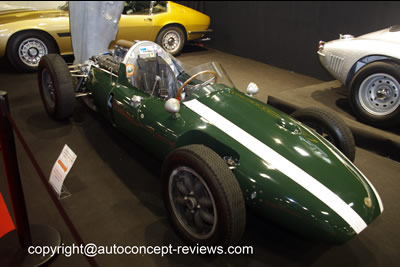 |
The Cooper T51 is a Formula One and Formula Two racing car introduced in 1959. It revolutionize racing with the use of the engine in the center rear position. It allowed Cooper Car Company to become World Champion Manufacturer and Jack Brabham World Champion Driver. The engine is a Coventry Climax FPF in longitudinal position with either 2.5 Litre or 2 Litre capacity. |
|
| |
| |
1965 Abarth 1000 Monoposto Record Class G - Exhibit FCA Heritage |
| In October 1965, the Abarth 1000 Monoposto Record Classe G - powered by a 1 litre twin cam engine- set the record for acceleration on the quarter-mile and 500-meter distances, beating feared competitors BMW and Porsche. The single seater used by Carlo Abarth himself in this feat was based on the Formula Two model from the previous year, with improved aerodynamics (nose and windshield) and engine; it indeed featured a capacity of 982 cc, two Weber 40 carburettors and two overhead camshafts. |
 |
| |
|
| |
1969 McLaren M7C-01 V8 Ford Cosworth - Exhibit Richard Mille |
| This McLaren is propelled by a 2993 cc 430 hp V8 Ford Cosworth DFV. |
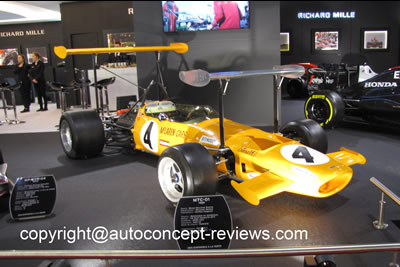 |
|
| |
1970 McLaren M14D Formula One - Exhibit Richard Mille |
| The 1970 McLaren M14D Formula One racing car was propelled by a 2993 cc 430 hp V8 Ford Cosworth DFV. |
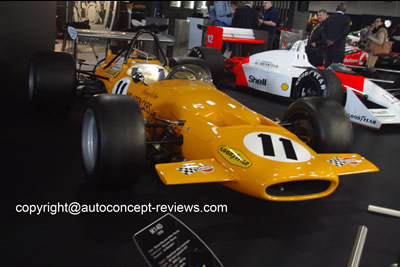 |
|
| |
1974 McLaren M23 Formula One - Exhibit Richard Mille |
|
|
|
| |
1974 SHADOW DN5 Formula One - Exhibit FISKENS
|
|
|
| |
1977 Ligier Matra MS76 Formula One - Exhibit Grand Prix de France 2019 |
| |
| This Ligier MATRA MS76 is propelled by a 2993 cc 510 hp V12 Matra engine. |
|
|
| |
1979 Renault RS10 Formula One - Exhibit Richard Mille |
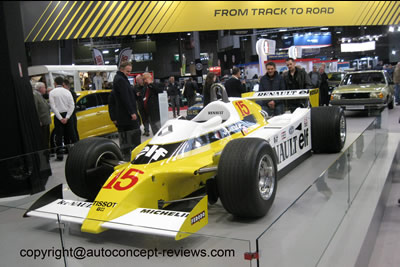 |
This car is the first formula one race car with turbocharged engine to win a Grand Prix and it was the 1979 French Grand Prix. In forty years Renault has completed 177 victories and 507 podiums. The engine is a turbocharged 1492 cc V6 producing 520 hp. |
|
| |
1984 McLaren MP4-2-01 TAG Porsche Formula One - Exhibit Richard Mille |
| This McLaren MP4-2-01 is propelled by a 700 hp V6 TAG Porsche engine. |
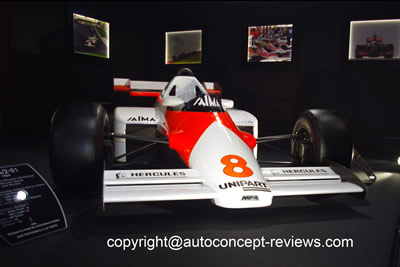 |
| |
|
| |
1988 McLaren MP4-4 Honda Formula One - Exhibit Richard Mille |
| This McLaren is propelled by a 650 hp 1494 cc V10 Honda engine. |
|
|
|
| |
1998 McLaren MP4-13 Mercedes Formula One - Exhibit Richard Mille |
| This McLaren is propelled by a 780 hp 2998 cc V10 Mercedes Benz engine. |
|
|
| |
|
|
| |
1911 Bugatti Type 13 Brescia - Exhibit Pure Sang |
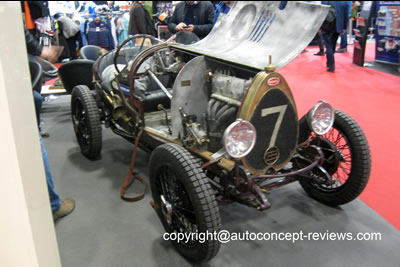 |
The first Bugatti Type 13 was built in 1914. The World War interrupted the industrial activity and it is in 1919 that manufacturing restarted. For the 1921 racing season, a development of the 16 valves was produced featuring a built-up ball-bearing crankshaft, roller bearing connecting rods and twin magneto ignition, which secured an outstanding victory on the 8th September 1921 in Brescia when the four team cars of Friderich, De Viscaya, Baccoli and Marco took the first four places in the most important voiturette race of the season. Friderich won in 2 hours 59 minutes and 18 seconds with an average speed of 116 kph. See Bugatti Type 13 Brescia |
|
| |
1925 Bugatti T30 - Exhibit Bugatti Club |
| The Bugatti T30 is the first Bugatti with eight cylinder engine. The engine produces 70 hp.The coachwork here is made by Lavocat and Marsaud. |
 |
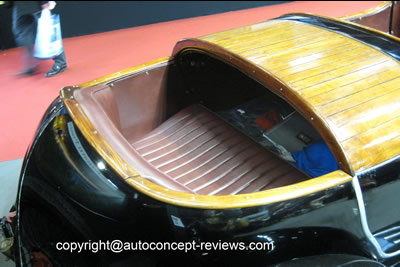 |
|
|
| |
1929 Bugatti Type 37A - Exhibit GIRARDO & Co
|
The Bugatti Type 37 was introduced in November 1925, and it proved to be one of the most iconic and instantly recognizable racing cars to leave Ettore Bugatti’s facilities in Molsheim, France. Like its predecessor, the Type 35, the Type 37 provided enough performance for even the most demanding customer, whilst also offering an excellent level of practicality for events and rallies. The inline four-cylinder engine proved itself to be very reliable, providing a huge amount of excitement to the individual behind the wheel. Not only could the Type 37 be driven hard all day, it also proved reliable enough to be driven home when the sun set.
Compared to its siblings, the Type 37 relied on mechanical simplicity, finesse, and light weight for its performance. With a compact yet powerful 1.5-litre engine, the whole package was quickly identified as a potential race winner amongst serious drivers on the international racing scene.
Even though the Type 37 was competitive, racers always asked for more power, and Bugatti delivered. Around 18 months after the Type 37’s initial introduction, Bugatti introduced the Type 37A, with the major improvement being a Roots-type supercharger. Performance was massively improved over the naturally aspirated model, and the car was capable of reaching a top speed of 122 mph. The updated Type 37A proved to be successful, and it saw action in some of the world’s greatest endurance races, including the Mille Miglia, the 24 Hours of Le Mans and the Targa Florio. Whilst Bugatti produced 286 Type 37s, only 76 were supercharged by the factory.( Source Girardo & Co)
See Bugatti Type 35 and derivatives Type 37, 39 and 51 1924 1931 |
 |
 |
|
|
| |
1932 Bugatti Type 55 Grand Sport - Exhibit Bugatti 110 years
|
| |
| The Bugatti Type 55 is a sports car produced by from 1932-1935. It is a road-going version of the Type 51 Grand Prix car. The Type 55 was introduced at the 1931 Paris Motor Show. 38 cars were produced in total. (Source Wikipedia) |
| |
 |
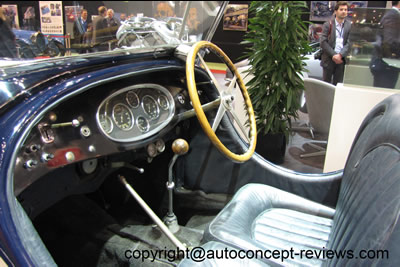 |
|
|
1937 Bugatti 57S - Exhibit Yvan Dutton
|
| This Bugatti 57 S participated at Le Mans 24 Hours 1937. The introduction and success of the Type 57 range was two years later to be enhanced with further refinements and the option of the supercharged 57 model. This gave the dedicated Bugatti clientele the option of an additional 25 horsepower over the 135 horsepower standard carburettor model. (source Yvan Dutton) |
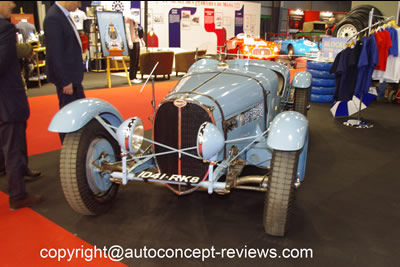 |
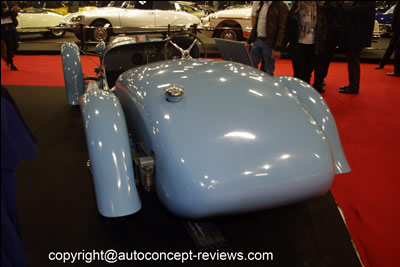 |
|
|
1938 Bugatti Type 57 Stelvio by Gangloff- Exhibit Yvan Dutton
|
| The introduction and success of the Type 57 range was two years later to be enhanced with further refinements and the option of the supercharged 57 model. This gave the dedicated Bugatti clientele the option of an additional 25 horsepower over the 135 horsepower standard carburettor model. The engine was a beautifully made gear-driven double-overhead cam in line eight, representing a conservative summation of all the vast Bugatti experiences with Grand Prix, sports and touring cars. The Type 57 was very much the brain child of Jean Bugatti, working together with senior Bugatti design engineers Pichetto and Domboy.Ettore Bugatti himself during this mid 1930's period was focused on the railcar project for the French Government. Bugatti was able to offer its discerning clientele a car for all occasions where a chassis could still be purchased and sent to a coachbuilder of choice, or one of the factory designed cars could be purchased, with the likesof the Galibier Conduite intérieure (with four doors), Ventoux Coach (two doors Coupe) and the Stelvio Cabriolet- the 4-seater Drophead version, clearly the most desirable of those three models.(source Yvan Dutton) |
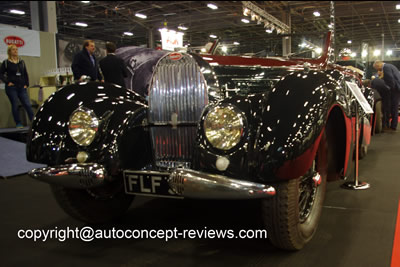 |
|
| |
|
| |
2016 - Bugatti Chiron- Exhibit Bugatti
|
| Molsheim / Geneva, February 29, 2016. Bugatti is celebrating a world premiere at the Geneva International Motor Show: the French luxury brand is unveiling the Bugatti Chiron, the most powerful, fastest, most luxurious and most exclusive production super sports car in the world. The Chiron is the latest generation of the ultimate super sports car and is a completely new development. See Bugatti Chiron 2016 |
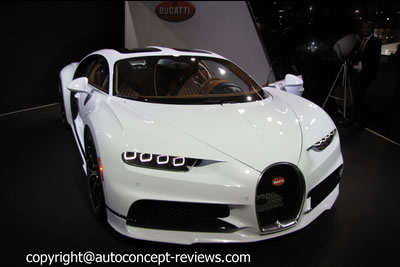 |
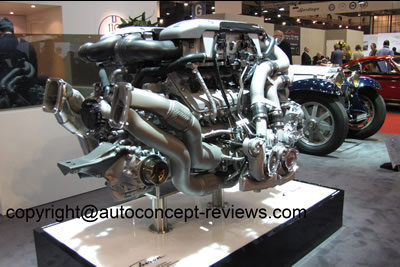 |
|
|
| |
5 -1959- 2000 MINI BMC 850 60 Years Anniversary |
Reducing fuel consumption was already becoming an important issue for vehicle developers fifty years ago. Back in 1956 the Suez crisis and petrol rationing were major factors for the automobile industry. BMC management gave designer Alec Issigonis the following guidelines: the Mini must make creative use of the limited space available; accommodate four passengers; and guarantee perfect handling and low fuel consumption. BMC dedicated £ 10,000,000 to the project. The project instruction was to produce the world’s most economic car. The new BMC 850 car called Morris Mini Minor or Austin Seven respectively by the two sales networks that were to handle it.
During the prototype stage, numerous cars were built with various engine arrangements. Air cooled units, so popular at the time on the Continent were given an exhaustive testing and eventually discarded. The revolutionary small car was 3.05 meter long and dedicated 80% of its volume to the passengers. The power plant was water cooled four cylinder placed across the front of the car over the transmission and activated the front wheels. The engine with 850 cc. produced 34 hp at 5500 rpm on a compression ratio of 8.3 to 1. The pushrod-operated overhead valves and other mechanical details follow standard BMC practice, but the driven plate of the clutch is on the opposite side of the flywheel, between it and the main bearing. See BMC 850 Austin Seven , Morris Mini Minor and derivatives 1959-2000 |
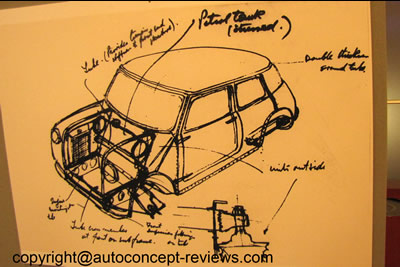 |
 |
 |
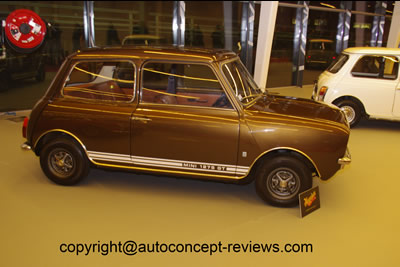 |
 |
 |
|
MINI MOKE |
| |
Back to Index |
|
| |
1949 Ferrari 166 MM Barchetta Touring - Exhibit Le Mans 1949 |
| The Ferrari 166MM is the first Ferrari produced and sold by Enzo Ferrari. MM makes reference to its victory at Mille Miglia racing event. This model won the 24 hours of Le Mans in 1949 with Luigi Chinetti and Lord Selsdon at the wheel. See Ferrari 166 MM Spider 1949 |
 |
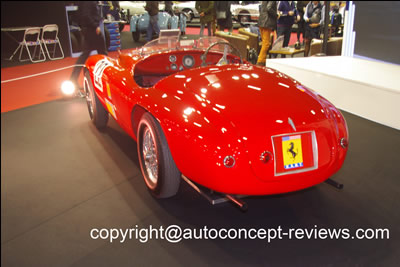 |
|
| |
1950 Ferrari 195 Inter GHIA - Exhibit MOVENDI
|
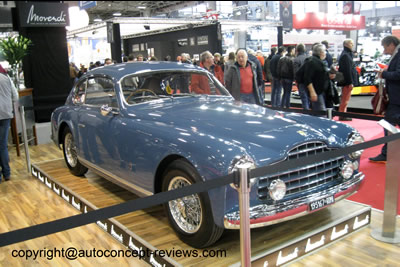 |
From 1953 onwards, most Ferrari were bodied by Pinin Farina. In the years before this, the names Touring, Vignale, Ghia or Bertone were also associated with Ferrari coachbuilding style. The Ferrari 195 Inter presented here was styled by Ghia in Turin. Giacinto Ghia established his company in 1915 and after his death the firm passed to Mario Felice Boano in 1948. See Ferrari 195 Inter GHIA |
|
| |
1970 Ferrari Daytona with Plexiglass front end- Exhibit Mecaniques Modernes et Classiques |
| The Ferrari 365 GTB4 'Daytona was produced at 1350 examples between 1968 and 1974. The first models had a Plexiglass front end. |
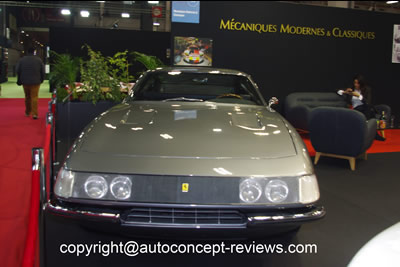 |
|
| |
1971 Ferrari 365 GTS - Exhibit KIENLE
|
This is one of only 18 Ferrari Daytona Spyders with European Specification produced out of a total run of 122 cars. The US version offers less torque as it comes with emission control system. |
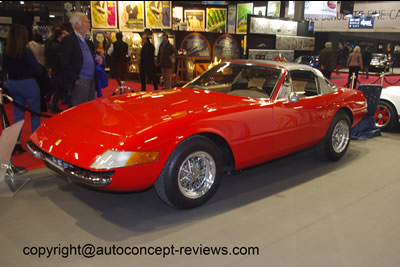 |
|
| |
|
|
1972 Ferrari 365 GTB-4 Daytona Competizione- Exhibit FISKENS
|
Only 15 Ferrari 365 GTB4 Daytona Competizione have been prepared at the factory. This example finished second in class and 6th overall at Le Mans 24 Hours in 1972. It was raced by fabled North American Racing Team in particular in 3 editions of the Daytona 24 Hours.
History has proven that the Daytona would be a fiercely competitive challenger in endurance racing, much against the initial thoughts of Maranello. Powered by the newly bored out Columbo V12, Chassis 15685 is the 10thof 15thCompetizione Daytonas completed by the factory. Benefitting from a 400 pound weight reduction, the performance of the Daytona went from strength to strength. (Source FISKENS) |
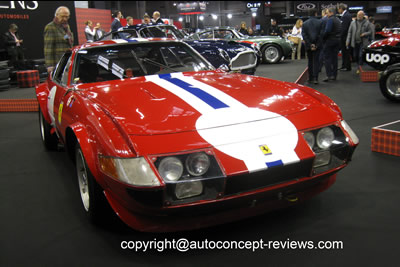 |
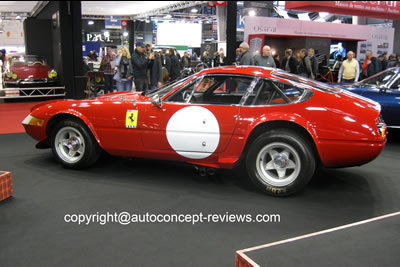 |
|
|
| |
1974 Ferrari 308 GT4 LM - Exhibit Collection Privé Automobile
|
| This Ferrari 308 GT4 LM is the unique example prepared by the Ferrari factory and participated under the Luigi Chinetti N.A.R.T. at 1974 Le Mans 24 Hours. Chassis N° 08020. |
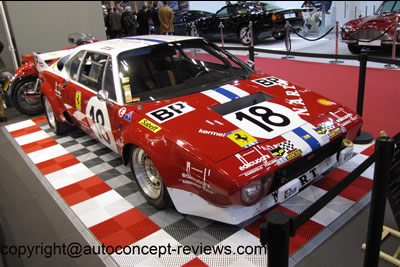 |
|
| |
1979 Ferrari 308 Carma FF Turbo |
This Ferrari 308 Carma FF Turbo is the only Ferrari 308 Group 5 prepared by Facetti and Finotto in their facility. The 3.0 Litre 8 cylinder engine with twin turbo and 4 valves per cylinder produces a maximum power of 900 hp. The car was built in 1979 for the 1980 and 1981 seasons. The car was entered at Le Mans but did not race. It completed its fastest race lap in the 24 Hours of Daytona. |
|
| |
1985 Ferrari 288 GTO Pininfarina - Exhibit Movendi |
The Ferrari 288 GTO was introduced in 1984 and 272 cars were produced until 1985. The V8 engine produced 400 hp at 7000 rpm allowing for a claimed top speed of 300 kph. |
|
| |
1987 1992 Ferrari F40 - Exhibit AUXIETRE & SCHMIDT and GIRARDO & Co |
The Ferrari F40 was created and built in 1987 for the commemoration of 40 Years of Ferrari as Automobile Manufacturer Company. Let us remember that the first Ferrari was completed in 1947 with a 1.5 Litre V12 engine of 125 cc unit capacity for each cylinder. The car called Ferrari 125 S was designed and developped by Giachino Colombo with technician Giuseppe Busso and test driver Luigi Bassi who all came from Alfa Romeo at the request of Enzo Ferrari. The Ferrari 125S was intended for racing and eventually won its second race at Rome Grand Prix with Franco Cortese at the wheel. See Ferrari F40 |
|
| |
| |
2014 LaFerrari - Exhibit RM Sotheby |
The new Ferrari supercar succeeding to the Enzo finally was launched at the 2013 Geneva Motor Show. It is the most sophisticated Ferrari homologated for the road with a combination of mid engine V12 and Hy Kers system electric motor. The design of the body was extensively developed in wind tunnel. It is called LaFerrari. Only 499 LaFerrari will be produced. See Ferrari LaFerrari Hy Kers 2013 |
|
| |
Back to Index |
7 - Bentley 100th Anniversary
|
|
1919 Bentley EXP 2 -Exhibit Bentley 100th Anniversary |
EXP 2 is the oldest surviving Bentley, the second ever made and the first to win a race. Its value is incalculable. EXP is the prefix given by Bentley to this (and all subsequent) pre-production models.Its 3 Litre monobloc engine featured four valves per cylinder, twin spark plugs, twin magnetos and made extensive use of aluminium and magnesium; this was an advanced specification for 1920, particularly for a road-going car. Like every Bentley since, the 3 Litre engine developed generous amounts of torque from low rpm, was durable, strong and capable of high performance.Bentley made three prototypes. EXP1 (EXPerimental No1) was built at New Street Mews off Baker Street and first ran in October 1919. EXP2 was built at Bentley’s new works in Cricklewood using a chassis exhibited at Olympia in November 1919 with a plain 2-seat body. The final one, EXP3, became known The Cab and was WO’s personal car. |
|
|
| |
1927 Bentley 3 Litre Red Label - Exhibit Swiss Concours Elegance |
| |
The Bentley 3 Litre is the first Bentley ever produced. The prototype was introduced at the 1919 Olympia Motor Show. The first production model was completed in 1921. The engine was a 2.996 cc four cylinder with four valves per cylinder and a single overhead camshaft. The Bentley 3 Litre was soon entered in different sports events while the factory continuously improved the product. The chassis was a rigid frame made of two longitudinal bars made of high grade steel of deep section and four heavy angled cross members. The front cross member supported the nose of the engine while the other cross members supported the gearbox and the rear axle. The Bentley 3 Litre was successful in competition. In 1923 J.F. Duff entered his car and drove with F.C. Clement to finish in fourth position. See Bentley 3 Litre 1921 1927 |
|
|
| |
1927 Bentley 6.5 Litre VDP Le Mans - Exhibit FISKENS |
This matching numbers 6½ litre has a wonderful story to tell. Found dilapidated in a government yard in Africa in the sixties, the Bentley started its life in style being sold through London Bentley agent, Jack Withers, to a Mrs Henry Bull of South Kensington. The Bull family were, it seems, very familiar with the Bentley marque, with Major P.C. Bull, resident at the same address, owning five Bentleys between 1926 and 1936.
Built as a 1927 Model Standard Six on the 12’6” wheelbase chassis with Standard Model specification engine number BX2410 and with the BS gearbox, BX2411 benefited from a free of charge update to 1928 specification by the works, as noted in the service record that accompanies the Bentley. This is due to the fact that Bentley rushed the 6½ litre into production for financial reasons and committed to retrospectively update all the early models. Unusually, BX2411 still has its original rod system to the brakes with no servo. The suspension is by replica Hartford friction units and electrical equipment is by Smiths. The works sent the completed chassis to Harrisons for a body frame and then to Offord for skinning
(source FISKENS) |
|
1929 Bentley Speed Six Gurney Nutting- Exhibit Axel Schuette |
| |
|
| |
8. Alfa Romeo |
1931 Alfa Romeo 1750 Coupe by Alfa Romeo |
This Alfa Romeo 1750 Coupe participated in the 1933 Mille Miglia. |
|
1931 Alfa Romeo 8C 2300 - Exhibit RM Sotheby |
| See Alfa Romeo 8C 2300 Spyder Mille Miglia ; |
|
| |
1950 Alfa Romeo 6C 2500 Super Sport Coupe by Touring- Exhibit GIRARDO & Co |
The 6C 2500 was a landmark model for Alfa Romeo, as it was both the end and start of two different chapters. This was the last car built by Alfa Romeo before World War II and the first built post-war, with engineering and designs evolving over time. This car also marked the end of Alfa Romeo’s long history with the 6C road car lineage, following this model was the four-cylinder 1900.
The top of the range, most sought-after and expensive of all 6C 2500s was the Super Sport, seen here, which was built using a developed and shorter 2,700 mm wheelbase, giving a sportier and more agile feel. Super Sport specification also meant that the Vittorio Jano-designed, six-cylinder, 2,443 cc engine was fed by three Weber carburettors, to produce an impressive 110 bhp — in 1950, let’s not forget!
As a result of this Alfa Romeo being so desirable, no less than 15 coachbuilders designed and built bodies for the 6C 2500, but the artisan who is perhaps most synonymous with this model is Carrozzeria Touring of Milan. Using its Superleggera construction technique, Touring’s designs are considered amongst the most exquisite to clothe the 6C 2500.
With only 383 Alfa Romeo 6C 2500 Super Sports built after the war, the car quickly gained huge admiration, becoming an icon for a nation working to move forward. A symbol of wealth and success in period, the Alfa Romeo 6C 2500 Super Sport has always been well admired by classic car connoisseurs, with examples now joining some of the largest and most important collections. (Source Girardo & Co) |
|
| |
1953 Alfa Romeo 1900 C Sprint Touring |
| |
|
| |
1955 Alfa Romeo 750 Competizione - Exhibit FCA Heritage |
The details of the collaboration between Carlo Abarth and Alfa Romeo to create the 750 Competizione - named after the Giuletta's type designation- were kept secret for a long time. The project aimed to create a vehicle for the sports car category, based on the enhanced mechanics of the Giuletta , to bring Alfa Romeo back to racing (the brand had left Formula 1 in 1951 after winning the Championship). Although the car was successfully tested and proved its good dynamic quality, the project was abandonned when Alfa Romeo decided not to return racing after all.
Engine Four-in line 1488 cc 145 hp at 8000 rpm for a claimed top speed of 220 kph. (Source FCA Heritage) |
| |
1957 Alfa Romeo 1900C Super Sprint Cabriolet by Touring -Exhibit Girardo & Co
|
The Alfa Romeo 1900 C Super Sprint Cabriolet by Carrozzeria Touring we are presenting here is a one-off. It was Carrozzeria Touring’s perception of a 1900 C Super Sprint Cabriolet and they built only one to showcase their design concept, making this car unique.
When the 1900 C Super Sprint Series II was launched, Carrozzeria Touring created a cabriolet concept and presented the design to Alfa Romeo, which was already at an advanced design stage for the 2000 Spider, for which they would award Carrozzeria Touring the contract. With this in mind, Alfa Romeo chose not to commission the 1900 C Super Sprint Cabriolet presented by Carrozzeria Touring; however, the Milanese coachbuilder chose to assemble only one example, to showcase exactly how elegant the design concept could have been. This is the only car they built. (Source Girardo & Co) |
| |
| |
1960 1961 Alfa Romeo SZ "Coda Ronda"- Exhibit Alfa Romeo Club de France |
Between 1960 and 1961 171 Alfa Romeo SZ "Coda Ronda" have been produced by Zagato. |
| |
|
| |
1963 1967 Alfa Romeo TZ1 Zagato - Exhibit AON |
This Alfa Romeo Giulia TZ1 Tubolare Zagato was indeed assembled by Autodelta and was a real competition car capable of good performances in the Grand Touring (GT) Class. It was fitted with a tubular space-frame , an aerodynamic body made of light alloy and an excellent powerful engine. See Alfa Romeo Giulia TZ1 Tubolare Zagato 1963 1966 |
|
| |
1971 Alfa Romeo Tipo 33-3 - Exhibit FISKENS |
Alfa Romeo Tipo 33-3 Chassis '009' was Autodelta's Brands Hatch and Nurburgring winner. It finished 2nd overall at Sebring and Targa Florio. |
| |
|
1972 Alfa Romeo Tipo 33 TT3 - Exhibit Girardo & Co |
During the 1971 FIA World Sports Car Championship season, Alfa Romeo and Autodelta began competing with its new and updated Tipo 33 TT 3. Taking design and engineering cues from their competition at Ferrari and Porsche, Alfa Romeo’s latest race car earned its name courtesy of its tubular chassis (Telaio Tubolare in Italian). An all-new steel spaceframe chassis replaced the out-dated sheet-aluminium monocoque of the previous Tipo 33/3.
The engine fitted in the Tipo 33 TT 3 was an updated and enhanced version of that previously seen in the Tipo 33/3, now boasting an impressive 440 bhp at 9,800 rpm. Thanks to its redesigned cylinder heads, this high-revving quad-cam, 36-valve V8 engine was producing the same power as Ferrari’s much heavier 12-cylinder unit! (source Girardo & Co) |
| |
|
|
| |
|
|
| |
|
1931 Aston Martin LM5 Team Car Le Mans- RM Sotheby
|
The Aston Martin HX4321 is one of the works entered car at Le Mans 24 Hours 1931. |
|
| |
| |
1934 Aston Martin 1.5 Litre MkII - Atelier des Coteaux
|
The Aston Martin Mk II was introduced in 1934 as a replacement to the model Le Mans with a new reinforced chassis and an improved engine. It was proposed either with short wheelbase or long wheelbase chassis. The shortest wheelbase is equivalent to the one of the Ulster that finished 3rd overall at 1935 Le Mans 24 Hours. |
|
| |
1952 Aston Martin DB2 - Atelier des Coteaux
|
This Aston Martin DB2 was presented as "Barn found" by Ateliers des Coteaux. |
| |
| |
1960 1961 Aston Martin DB4 GT - Auxietre & Schmidt and Fiskens
|
The Aston Martin DB4 GT was developed as high performance version of the Aston Martin DB4. The DB4 GT was more suited for racing purpose. The DB4 GT is a two seat GT car while the DB4 was a 2+2 Grand Touring car. The wheelbase has been reduced by 12 cm compared to the DB4 and the engine is more powerful (about 300 hp). The Aston Martin DB4 GT uses an aluminium body on fine steel tubes frame following the Superleggera promoted by the Italian Coachbuilder Touring. An even lighter model will be developed with bodywork by Zagato; this model can be seen on a separate Car Review under Aston Martin Section.
See Aston Martin DB4 GT 1960 See also Aston Martin DB4 GT Continuation 2016 |
|
| |
1961 Aston Martin DB4 GT Zagato - FISKENS
|
|
| |
10 - LAMBORGHINI |
| |
1965 1972 Lamborghini Miura P400- KIDSTON
|
The Lamborghini Miura's first public appearance occurred at 1965 Turin Motor Show; there was only a steel monocoque chassis structure with operating components and that is quite unique a fact in car history.
The engine was from the Lamborghini 400 GT, a 4 litre V12 but it was mounted in transverse orientation just in front of the rear axle. This central position was intended to optimize the weight distribution. The 5 speed ZF gearbox was installed under the engine. The position of the engine transmission allowed for a small luggage compartment while maintained a limited overall length. Let us remember that, at the time, only British Motor Corporation adopted such a layout and it was for the Mini sedan launched in 1958 with a small four cylinder engine placed at the front end. The evolotion on the track has always been showing the trends for exclusive GT cars; endurance racing cars with gradual change from front engine rear wheel drive to rear engine rear wheel drive , illustrated by the Ford GT40, have certainly had a clear influence on the layout selected for the Lamborghini Miura.
See Lamborghini Miura 1965 1972 - Lamborghini Miura S 1969 - |
| |
| |
1971 Lamborghini Miura SV - Polo Historico Lamborghini and KIDSTON
|
The body of the Lamborghini Miura was designed by Marcello Gandini, who was working at Bertone. The Lamborghini Miura generated a great deal of enthusiasm among visitors and media alike when it was presented at the Geneva Motor Show in March 1966. The Lamborghini Miura SV model shown here was presented in 1971 and only 150 models were built.
See Lamborghini Miura SV 1971 - Lamborghini Miura SVJ 1972 |
| |
|
1968 Lamborghini Miura Roadster - KIDSTON
|
In 1966, Lamborghini manufactured the first Miura. Two years later, this was followed by the Lamborghini Miura Roadster presented here, although this remained a one-off. It was presented at the Brussels Motor Show in 1968 but was never intended for series production.
See Lamborghini Miura Roadster |
|
| |
1966 Lamborghini 400 GT Flying Star II by Touring - Musée du Vehicule de Compiegne
|
This car is a unique Break version of the Lamborghini 400 GT prepared by Carrozzeria Touring Superleggera. |
|
| |
11 - Lancia |
| |
1924 Lancia Lambda 2nd Serie Torpedo - Exhibit Lukas Huni
|
The Lancia Lamda produced in the 1920s is considered as a classic and revolutionary vehicle. It is the first automobile with a self-supporting body structure replacing the conventional chassis and body combination. The car is light with a low centre of gravity. The engine is a very narrow V4 (13°6’) with a single overhead camshaft commanding all the valves. The camshaft is driven by a set of gears. Engine capacity is 2.119 cc in 1922 producing 49 hp at 3.250 rpm and moving to 2.568 cc in 1928 for 69 hp at 3.500 rpm.
In total 13.000 units were produced between 1922 and 1931 and corresponds to 9 evolutions of the base model designated from Serie 1 to Serie 9.
See Lancia Lambda 1922 1931 |
| |
| |
1934 Lancia Astura Short Chassis Torpedo Viotti -Exhibit Lukas Huni
|
Introduced at the end of 1931, the 1st Series Astura featured a 2604 cc V8 engine and a wheel base of 3177 cm. After a production of 500 cars, the 2nd Series came out in 1933 followed by the 3rd Series in 1934, featuring an increased engine size to 2972 cc . The most prestigious coachbuilders of the Thirties worked closely with Lancia to compliment the high quality cars with beautifull body designs, becoming increasingly exotic and streamlined with each next series.
This particular car Astura 233C Short Chassis Torpedo Sport by Viotti is one of only few 3rd Series Short Chassis examples with coachwork by Viotti of Turin. |
| |
| |
1936 Lancia Astura 3rd Serie Cabriolet Bocca Pinin Farina - Exhibit Lukas Huni
|
Introduced at the end of 1931, the 1st Series Astura featured a 2604 cc V8 engine and a wheel base of 3177 cm. After a production of 500 cars, the 2nd Series came out in 1933 followed by the 3rd Series in 1934, featuring an increased engine size to 2972 cc . The most prestigious coachbuilders of the Thirties worked closely with Lancia to compliment the high quality cars with beautifull body designs, becoming increasingly exotic and streamlined with each next series. Pinin Farina made the coachwork for a number of Astura 3rd Series, but a very special batch of 4 to 5 cars was made as Astura Pinin Farina Cabriolet "Bocca", a most extravagant design created for Pinin Farina by famous Italian designer Revelli de Beaumont for Lancia dealer Ernesto Bocca. It features the classic Lancia radiator shell , a vey long bonnet, very aerodynamic ponton wings, a very distinct rear section, fold-down windscreen and a number of further unusual design details. This design is considered to be the most elegant of all times for any Italian open luxury automobile. |
| |
| |
1938 Lancia Aprilia Barchetta Aerodinamica Farina Design - Exhibit Lukas Huni
|
| The Lancia Aprilia Berlinetta Aerodinamica was built at Lancia factory with streamlined body. The car was propelled by a very small narrow angle V4 typically producing 47 hp. This particular car was prepared by Farina Design with Aluminium Barchetta Body. The car with streamlined body weighted only 760 kg and was propelled by enhanced V4 producing 85 hp. Race participation of this car include Mille Miglia 1939. |
| |
| |
1938 Lancia Aprilia Berlinetta Aerodinamica - Exhibit Lukas Huni
|
The Lancia Aprilia Berlinetta Aerodinamica was built at Lancia factory with streamlined body. The car was propelled by a very small narrow angle 1352 cc V4 producing 47 hp. The aerodynamic body had small dimensions yet offering maximum room inside. The revolutionary independant front suspension (sliding-pillar) was adapted from the Lambda and the independant rear suspension by trailing arms , a new synchromesh gearbox (on 2,3,4) and hydrailic brakes were developed. The monocoque (uni-construction) by Ing Falchetto was pillarless which required extreme efforts on torsional stiffness, achieved by special electric welding and cross reinforcements of the car floor. |
|
|
| |
1953 Lancia D23 Competition Barchetta Pinin Farina - Exhibit Lukas Huni
|
After World War II Gianni Lancia, the son of founder Vincenzo Lancia, after the death of his father, persuaded his mother Adele Lancia to create state-of-the-art competition cars to participate in international racing. Lancia's genius Vittorio Jano and his brilliant engineer Francesco de Virgilio created the most innovative Competition Department of the Fifties. With Vittorio Jano on board as head of experimentation design, Lancia had sped out of post-war gloom with the superb Aurelia that brimmed with technical advancements- 60° V6, all independant suspension, inboard brakes and transaxle gearbox. This highly advanced production model was naturally well suited to competition and took a succession of impressive results.
For sports car events such as Le Mans, the Mille Miglia or the Carrera Panamericana Lancia prepared the D20, a light competition coupé. Mechanically the car was based on the Aurelia, but the engine was heavily modified including 4 overhead camshafts, twin ignition and increased capacity to 2962 cc developing 217 hp. Some drivers complained about excess heat in the cockpit. Lancia therefore decided to convert the D20 coupe into an open barchetta which was to be called D23.
The D23 proved instantly successful with a 2nd place at the Monaco GP in 1953 (Bonetto at the wheel) and the Copa Dolomiti (Taruffi at the wheel) or a third place in the Carrera Panamericana with Castelloti at the wheel. |
|
1954 Lancia Aurelia B20 Pinin Farina Coupe- Exhibit Lukas Huni
|
The Lancia Aurelia stands out to be one of the significant automobiles of the Fifties. Designed by Vittorio Jano who had developed the legendary Alfa Romeo 8C 2300, the Aurelia caused a sensation when it was introduced at the Turin Motor Show in 1950.
In 1951, the Aurelia B20 GT was introduced, a true Grand Turismo featuring a timelessly beautiful "fastback" Coupé body by Pinin Farina. With the engine increased to 1991 cc, the B20 proved an immensely capable sportscar. It won its class in the 1951 Mille Miglia ahead of all the two-litre Ferrari, and finished second overall behind a 4.1 Litre Ferrari. In the Italian Dolomite race, the Aurelia placed first, second and forth in competition against Ferrari. In 1952, an Aurelia won the two-litre class at Le Mans and finished third in the Mille Miglia, ahead of Caracciola's 3000 SLR Mercedes. The Aurelia took the first 3 places in the Targa Florio, and Maglioli finished fourth in the Panamericana. |
|
|
| |
1970 Lancia Stratos HF Zero Bertone - Exhibit Lancia Club France
|
At the turn of the 1970s, the great design rivalry between Bertone and Pininfarina reached an all-time high, with both companies seemingly determined to pull out all the stops to outdo one another. Bertone had perhaps opened the hostilities with the Marzal and with the first “wedge-shaped” supercar concept, the mighty Alfa Romeo Carabo. Italdesign had joined the fray with the Bizzarrini Manta and the Alfa Romeo Iguana. Pininfarina had replied using all its Ferrari firepower with the striking P5, the 512S berlinetta and the Modulo. The latter had caused quite a stir at the Geneva Motor Show in March 1970, yet nothing, not even the outlandish Modulo, could really have prepared visitors of the 1970 Turin Motor Show just a few months later to what they were about to see on the Bertone stand. The car was officially labelled “Stratos HF.” Nuccio Bertone had initially wanted to call it “Stratolimite,” as in “limit of the stratosphere,” clearly inspired by its space-age design. But after some time, it came to be known simply by its internal nickname: Zero.
With the Stratos Zero, Bertone transcended the limits of automotive styling and chiselled a shape that appeared as though it were made of a solid block of metal, evoking speed and the sensation of travel. More remarkable still was the fact that the Zero was not only a design statement but a fully functioning prototype. There was a clear continuity of style and intent between the 1968 Carabo, 1970 Stratos and 1971 Countach prototype. The three projects showed a linear progression in formal research, to the extent that, randomly looking at the preliminary sketches done for each car and omitting the dates, it is difficult to tell which of those three projects they were for. The Lancia Stratos Zero was sold for Euros 761.600 at Villa Erba 2013 RM Sotheby Auction Sale. (source RM Sotheby 2013) |
| |
|
1974 Lancia Stratos HF Stradale - Exhibit Lukas Huni and Auto Epoca
|
The Lancia Stratos started a new era in ralying as it was the first car specifically designed and constructed for this kind of competition and caused a snsation when it was launched to the public as a prototype at Turin Motor Show in 1970. The three leading men behind the entire Lancia rally project were Lancia team manager Cesare Fiorio, British racing driver and engineer Mike Parkes and factory rally driver Sandro Munari.
The striking wedge-shaped fibreglass bodywork was designed by Bertone's head designer Marcello Gandini. The car was unusually short (216 cm wheelbase) and wide. This, in combination with the transversely mid-mounted Ferrari Dino V6 engine, gave the car an excellent traction and agility. The complete car only weighed 980 kg resulting in 0-100 kph (0-62 mph) in 6.8 seconds.
Production of the 500 road cars required for homologation was launched in 1973. In 2014 a Lancia Stratos HF Stradale made in 1974 was sold for US$ 660.000 at Monterey RM Sotheby Auction sale. |
|
| |
1974 Lancia Stratos Group 4 - Exhibit Lukas Huni
|
The Lancia Stratos started a new era in ralying as it was the first car specifically designed and constructed for this kind of competition and caused a snsation when it was launched to the public as a prototype at Turin Motor Show in 1970. The three leading men behind the entire Lancia rally project were Lancia team manager Cesare Fiorio, British racing driver and engineer Mike Parkes and factory rally driver Sandro Munari.
In 1974, when Mike Parkes took over the technical development, a second phase of the Stratos career began - the Stratos Group 4. Though based on the road version, the Group 4 features a tuned 24 valves 270 horsepower engine, modified gearbox and hugely modified brakes and uniball-suspension, transforming the delicate handling towards an infinitely superior roadholding. Accompanying visual features were a wider body with larger spoilers, wider wheels and a completely modified dashboard.
19 cars were factory team cars, but most of the Group 4 cars were delivered originally as road version and converted to Group 4 specification for various Hill Climb Championships with the complete Group 4 kit supplied by Lancia.
|
|
|
| |
1979 Lancia BETA Montecarlo Turbo Group 5-
|
The Lancia Beta Montecarlo in exhibit is one of only 11 works Lancia Beta built. It gained Constructor World Championship in 1980 and 1981. It was driven by Alboreto, Cheever, Patrese and Ghinzani. |
|
|
| |
1983 Ex works Lancia Rally 037 EVO II Group B - Exhibit Lukas Huni
|
After the huge success in the Rally Championship with the Stratos, Lancia decided to build another purpose-built rally car. The Group B regulations required a production run of at least 200 units for the homologation of a car. It was decided to use a slightly modified version of the Lancia Beta Montecarlo race car with its sheet metal centre section and the tubular front and rear. This time it was Pininfarina who was chosen not only for the design , but also for the production run of the 200 units. Abarth, by this time responsible for all competition engines of the FIAT group rexcept for Ferrari, were commissioned to supply the engines. A two litre 4 cylinder 16 V with a Roots supercharger was chosen. Like the Stratos, the Rally 037 had a mid-engine layout but a longer wheelbase for more predictable handling and the gearbox was mounted behind theengine. The latter allowed for a quick change of gear ratios between rally stages. |
|
|
| |
1982 Lancia Rally 037 - Exhibit FCA Heritage
|
The synergies between Abarth and Lancia wre strenghtened when FIAT acquired the "House of the Scorpion" which became the racing division serving all the Group's brands. Thanks to this collaboration, marked by the Abarth product abbreviation SE037, the 1980s saw the rise of the Lancia Rally's glorious history.
The model was a prefect mix of Pininfarina bodywork and Abarth mechanics, and was designed to replace the famous-but dated-Fiat 131 Abarth Rally in international rally competitions. Based on the central section of the Lancia Beta Montecarlo, the 037 featured a two litre 16 Valve twin-cam Fiat engine; the street legal version on display (one of 200 manufactured to achieve Group B homologation) reached 205 hp, capable of pushing it over 220 kph at top speed and reaching 100 kph from zero in less than seven seconds. |
|
|
| |
1991 Lancia Delta HF Integrale 16 V Group A - Exhibit Lukas Huni
|
The end of the Group B area led to the Group A car as being the fastest on the World Rally grid. In this category the cars had to be far closer to their roadgoing derivatives and a minimum production run of 5000 cars per year was required for homologation. The decidion was made to stay with the rather dull Lancia Delta hatchback from their portofolio as a base car, develop a new 4WD system for it and massively increase the power output, hence was born the Delta HF Integrale. This car, which was to become Italy's first production all wheel drive car, was a potent and nimble hot hatchback which dominated the World Rally Championship for six consecutive years from 1987 to 1992. Constant development kept the car competitive over the years until in 1991 sadly and very surprisingly, Lancia retired from its official Rally involvement and gave their cars to the privately-owned Jolly Club Team. |
|
|
| |
Back to Index |
|
1964 1965 Porsche 904 -
|
| Porsche introduced in 1964 the mid engined 904. According to FIA GT regulation road version were built for qualification of racing cars. Body was fiberglass bonded to the steel chassis. Original 904 were propulsed by a flat four while later versions benefitted a flat six. See Porsche 904 1964 1967 |
|
| |
1966 Porsche 906 - |
The Porsche 906 or Carrera 6 appeared in 1965 derived from a 904 with flat six engine. The new body was developped in wind tunnel. The chassis was tubular frame. Most models were propulsed by 2 liter flat 6. See Porsche 906 1966 1969 |
|
| |
1978 Porsche 935 K3 - Exhibit Girardo & Co |
It was not just the Porsche factory who developed the 935 into the potent winning machine it was, as some privateer teams saw opportunities to enhance the cars, with the Kremer brothers in Germany being the most prominent and successful. In 1976, Kremer Racing developed the K1 and, in 1977, the K2, before the K3 appeared at the start of the 1979 season. The K3 went on to win the 1979 Le Mans 24 Hours, with a factory-specification Porsche 935 finishing 2nd.
This twin-turbo Porsche 935 K3 was built by Porsche in 1978 and sold through VW of America and Vasek Polak to the Interscope Racing Team, owned by American media mogul, entrepreneur and film producer Ted Field. Porsche built 24 customer twin-turbo 935s between 1978 and 1979. (Source GIRARDO & Co) |
| |
|
| |
1969 Porsche 908-02
|
When in October 1967, the FIA set the engine capacity limit for prototypes at three litres (and Sports Cars at five litres), Porsche was fairly well prepared. Previous rumours had hinted at this move and no time had ben lost: as early as July 1967 design was started on a completely new three litre, eight cylinder engine (Type 908) which was to be dropped into a chassis derived from the Type 907, to become the 908 coupé.
Before the 1969 Le Mans race, both the short and long-tail coupés were examined in the wind tunnel. The first 908.02 had been tested in the wind tunnel at the end of 1968. It had the advantage of being about 100 kg (220 lb.) lighter than the long-tail coupé, but it had a higher drag. (Source The Porsche Book by Lothar Boschen and Jürgen Barth 1978) |
| |
|
| |
1989 Porsche 930 Turbo Cabriolet -Exhibit Mecaniques Modernes & Classiques
|
| |
|
| |
1993 Dauer 962 Le Mans based on Porsche 962
|
| The Dauer 962 is based on Porsche 962 and one example in racing version won Le Mans 24 Hours in 1994. This is one road legal version. |
|
| |
2006 Porsche Carrera GT - Exhibit RM Sotheby
|
| The Porsche introduced in 2003 a supercar to respond to market opportunity; Carbon fiber structure, 10 cylinder 5,7 liter with 605 cv at 8.000 rpm, ceramic disc brakes are part of the proposal. Production is limited to 1500 units. See Porsche Carrera GT 2003 2006. |
|
| |
Back to Index |
| |
| |
1951 1953 Jaguar C Type- Exhibit Fiskens
|
In 1951 Jaguar developped the road racing sports car C Type with multitubular frame and aluminium body;the engine was a 6 cylinder 3.412 cc derived from the XK120 and produced 200 h.p. at 5.800 rpm originally.The Jaguar C Type won at 24 Hours of Le Mans in 1951 for its first appearance on the track. Further development in 1952 include replacing drum brakes by disc brakes. The Jaguar C Type won again at Le Mans in 1953. See Jaguar C Type 1951 1953 |
|
| |
1952 Jaguar XK 120 Flying Jaguar by Stabilimenti Farina -Exhibit La Galerie des Damiers
|
| |
| |
| The chassis for this unique XK120 coupé was ordered from Jaguar's Belgian importer, Mme Bourgeois, and sent directly to the Italian coachbuilder, Stabilimenti Farina, with instructions to create a one-off coupé body to star on her Jaguar stand at the 1952 Brussles Motor Show. Christened 'The Flying Jaguar', this 1952 car was one of three special Jaguars commissioned by Mme Bourgeois from Stabilimenti Farina, the other two being based on the large Mark VI Saloon - the 1951 'Meteor' coupé, plus the 1952 'Golden Arrow' cabriolet. Despite being based on one of the most iconic of all British sports cars, this one-off Farina XK 120 has never been in the UK until now. |
 |
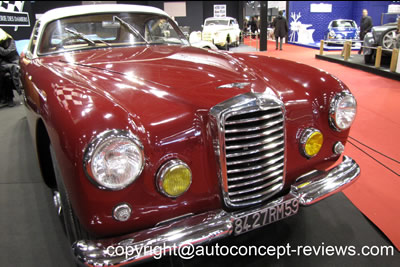 |
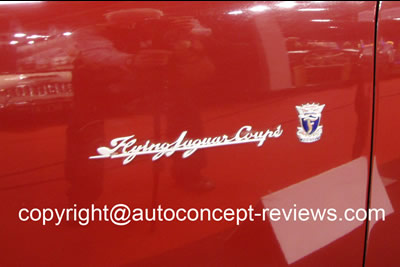 |
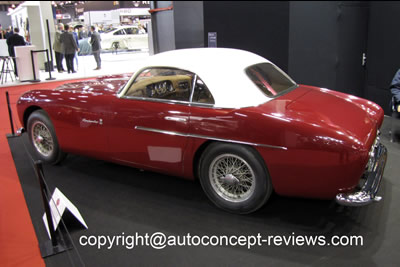 |
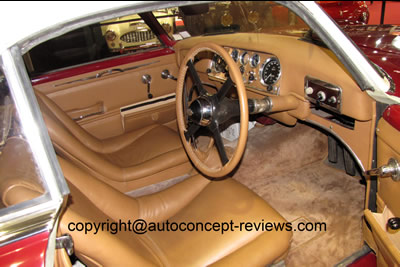 |
|
| |
1955 HWM Jaguar HWM1- Exhibit Fiskens
|
|
| |
| |
1958 Lister Jaguar -Exhibit ASCOTT
|
|
|
| |
1961 1973 Jaguar E Type Reborn - Exhibit Jaguar Classic
|
Jaguar Classic granted the Retromobile 2019 event with a World Premiere by lauching the Born Again program of the E- Type Series 1.
related article Car Review Jaguar E Type 1961-1975 |
| |
|
| |
1963 Jaguar E Type Low Drag - Exhibit JA Automobiles
|
This a fully restored Jaguar E Type Low Drag |
|
| |
1963 Jaguar Lightweight E Type - Exhibit Girardo & Co
|
Jaguar built the Lightweight E-Type Competition Roadster as a follow up to the hugely dominant D-Type, which claimed victory at the famed Le Mans 24 Hours three years consecutively! These Lightweights featured revised bodywork, which was manufactured from aluminium instead of the standard steel E-Type panels, and fitted with a race-tuned aluminium block with a ‘wide-angle’ cylinder head and a Lucas fuel-injected, 3.8-litre, straight six-cylinder engine, which could produce in excess of 300 bhp!
In competition, the Jaguar Lightweight E-Type was formidable, with greats including Graham Hill, Briggs Cunningham, Jackie Stewart, Dan Gurney, Roy Salvadori, Dick Protheroe, Bruce McLaren, Jack Sears, Walt Hansgen and Brian Redman choosing to take to the wheel! (source Girardo & Co)
related article Car Review Jaguar E Type Lightweight 1963 |
|
1990 1992 Jaguar XJR 15 -
|
53 Jaguar XJR 15 were produced of which 16 were track-only automobiles entered in single model competition before a few Formula One Races. The car was prepared by Jaguar Sport and based on Le Mans winning Jaguar XJR 9. |
| |
|
| |
1992 1994 Jaguar XJ 220 - Exhibit JLR Heritage
|
In 1984 the Thatcher government decided that the Jaguar Company would bcome a private company again as it was part of British Motor Corporation. The sales of Jaguar share at the City was a real success. A new Jaguar Company emerged. A team of enthustasts in the company started development of a supercar that would illustrate the new venture against such cars as the Porsche 959 or the Ferrari 288 GTO. The team of enthusiasts called "Saturday Team" developed the project with no less than forty British suppliers.
The XJ220 Project included four wheel drive and the propulsion by the V12 of the XJ R9 slightly modified for road use; for example the maximum power of the 6.222 cc V12 was dropped from 700 hp to 500 hp. The Jaguar XJ 220 was fisrt unveiled at the 1988 Birmingham Motor Show together with the possibility for pre order at £ 50.000. The rumor calls for some 1.500 pre-orders. The prototype still needed development work to be translated in a limited production model.
related article Car Review Jaguar XJ220 1988 1994 |
|
2018 Jaguar D Type Continuation - Exhibit JLR Heritage
|
In 2018 JLR Heritage introduced a new program allowing customers to purchase a Jaguar D-Type under the "Continuation" designation. |
|
| |
|
|
1953 Maserati A6 GCS - Exhibit FISKENS
|
| Maserati was founded in 1914 and focused exclusively on the manufacture of racing cars until the first series vehicle was produced with the Maserati A6 in 1946. The second series of model Maserati of the model Maserati A6 GCS was first launched in 1953 with three works models at the Mille Miglia in 1953. A total of some 50 units was built. See Maserati A6 GCS Barchetta Fantuzzi 1955 |
|
| |
1960 Maserati 3500 GT Coupe Touring -Exhibit Holdmayer
|
| The first Maserati 3500 GT was introduced at the 1957 Geneva Motor Show as a prototype with a Touring Coupé body (1962 Touring Coupe: photos 1/16 to 7/16). Production started in 1958 and lasted till 1964 for a total of 2.225 units including coupe and spider versions with different body; the great majority was Touring Superleggera coupe. Other body version were made by Allemeno, Frua or Vignale.The Maserati 3500 GT was designed by the engineer Alfieri using a multi-tubular space frame. See Maserati 3500 GT |
|
| |
1962 Maserati 5000 GT Coupe Allemano- Exhibit Holdmayer
|
| The Maserati 5000 GT Coupé was one of the fastest and exclusive in the Gran Turismo class of its time. These cars were built between 1959 and 1965 and they owe their existence to the decision by Maserati to withdraw from motor sport. The V8 racing engines from the Maserati 450S that were no longer required were married to the chassis of the 3500 GT and supplied to eight of the world most prestigious automobile designers. See Maserati 5000 GT 1962 |
|
| |
2004 2005 Maserati MC12 Corsa GT FIA - Exhibit GIRARDO & Co
|
The Maserati MC12 GT1 marked the return of one of Italy’s greatest brands to the track and its ascendance to the top step of the podium. Its competition debut came in the highly competitive 2004 FIA GT Championship with the factory-backed AF Corse squad. A year later and the Maserati MC12 GT1 won the FIA GT Manufacturers’ Cup, scoring almost double the championship points of the nearest competitor! The MC12 GT1 was powered by a 6.0-litre, V12, naturally aspirated engine, which, due to regulations, was fitted with a restrictor, resulting in the car producing an impressive 580 bhp.
The MC12 GT1 was a dominant force, and over the next six seasons of racing, it claimed six FIA Teams’ Championships, two FIA GT Constructors’ Championships, six Drivers’ Championships and no less than 40 race victories!
Designed for track use by its most important clientele, the Maserati MC12 Corsa was a direct development of the MC12 GT1. Void of restrictors, the race-derived 6.0-litre, naturally aspirated, V12 engine produced an incredible 745 bhp at 8,000 rpm — over 110 bhp more than the MC12 Stradale and 150 bhp more than the MC12 GT1 race car!
The Maserati MC12 Corsa offered here, chassis 005, was the only car delivered in silver, with a fabulous bordeaux Alcantara interior to complement. With its dark grey wheels and exposed carbon-fibre rear wing and mounts, this MC12 Corsa has a fabulously understated yet unmistakeable presence — it’s purposeful but not flashy.
Maserati produced only 12 of these ultimate track weapons to rival Ferrari’s 30 FXXs. Those 12 clients were offered the car by invitation, at a cost of €1,000,000. For your money, this MC12 Corsa could propel itself from 0 to 200 km/h (0–124 mph) in a mere 6.4 seconds and continue on to a top speed of 326 km/h (202 mph) (Source GIRARDO & Co) FOR FURTHER PHOTOS SEE Maserati MC12 |
|
Back to Index |
15 - Overview of some cars around the alleys - Chronological order
|
1920 1933 Hispano Suiza H6B - Exhibit Club Automobiles Hispano Suiza
|
1920 1933 Hispano Suiza H6B with 6597 cc six cylinder engine |
| |
|
| |
1920 Ballot 3-8 LC Grand Prix - Exhibit Chantilly Concours d'Elegance
|
| 1920 Ballot 3-8 LC Grand Prix is powered by an eight cylinder 2970 cc producing 150 hp |
|
| |
1923 Mercedes Type 6-40-65 Targa Florio -Exhibit Axel Schuette
|
| |
|
| |
| |
1926 AMILCAR CGSS - Exhibit AMILCAR CLUB
|
| 1926 AMILCAR CGSS has Grand Sport Lowered Chassis with 1100 cc four cylinder engine. |
|
| |
1930 Peugeot 201 Torpedo - Exhibit Club Peugeot
|
| |
|
| |
1932 Rolls Royce Phantom II - Exhibit Christophe Grohe
|
|
| |
1933 RENAULT NervaSport TG -
|
| 1933 RENAULT NervaSport TG is powered by a 4240 cc eight cylinder engine producing 100 hp. |
| |
|
| |
1935 FIAT 508 CS Berlinetta Mille Miglia-
|
| Top of the Fiat Ballila range with the spiders Coppad'oro 995 cc 36 CV. On an idea by Ghia, this prototype was developed in 1933 in wind tunnel and was presented as Berlinetta "l'Aerodynamique" from 1934 to 1936. There are five remaining examples over 100 in production. This car is reported to have participated at Mille Miglia as well as Le Mans 24 Hours |
|
| |
| |
1936 Talbot T120 Baby Sport - Exhibit Club Talbot
|
| 1936 Talbot T120 Baby Sport is powered by a 3 Litres six cylinder engine producing 90 hp and allowing a top speed of 140 kph. |
| |
|
| |
1938 Delahaye 135 M Chapron - Exhibit OSENAT
|
|
| |
| |
1941 Peugeot VLV Electric Car - Exhibit Amicale Peugeot
|
| Petrol scarcity during Second World War induced Peugeot to produce the VLV ( Vehicle Leger de Ville or Light Urban Vehicle) with two seats. Weight 350 kg of which 160 kg are for the batteries. Operating range 80 km. Top speed 36 kph. 377 cars produced. These vehicles were essentially used for Post distribution or medical assistance since war conditions required special driving authorisation. See Peugeot VLV Electric 1941 1945 |
|
| |
1946 Delahaye 135 MC by Classic Touraine - Exhibit FISKENS
|
| This Delahaye 135 MC was rebuilt by Classic Touraine in accordance of the requirements of the customer. |
| |
|
| |
1947 Delahaye 135 M by Chapron - Exhibit Christophe Grohe
|
| |
|
| |
1948 D.B. - Exhibit Le Mans 1949
|
| |
|
| |
1950 Talbot Lago Chambas Barchetta - Exhibit La Galerie des Damiers
|
| |
| |
|
| |
1954 Hotchkiss-Gregoire - Exhibit Amicale Hotchkiss
|
| |
|
| |
1955 D.B. Citroen - Exhibit Amicale D.B.
|
| |
|
| |
1955 Lotus Mk X - Exhibit La Galerie des Damiers
|
| This Lotus Mk X is propelled by a Bristol engine |
| |
|
| |
1957 FIAT 500 Elaborazione Abarth Record - Exhibit FCA Heritage
|
| In 1957, Carlo Abarth decided to enhance the FIAT Nuova 500, a city car granting performances way below race car standards. Its 479 cc two cylinder engine was considered too small and not powerful enough to achieve great results- but Abarth set out to prove the model's quality by turning it into a record breaking car. His modified 500 featured a 26 hp engine and could reach a top speed of 118 kph (73 mph); it raced around the Monza track for 168 consecutive hours, collecting 6 international records. |
|
| |
1961 FACEL II - Exhibit Amicale Facel Vega
|
|
| |
1963 AC Cobra 289 - Exhibit FISKENS
|
AC Cars built Cobra chassis number CSX2131 at its Thames Ditton factory, especially for drivers Sanderson and Bolton and then Team Manager, Moss to campaign at Le Mans in 1963. The Cobra was fitted with a specially fabricated and removable ‘fast track’ aluminium hard top to handle the aerodynamic requirements of the long Mulsanne Straight, an integral fuel filler, enlarged front and rear bumpers, Dunlop one-piece magnesium wheels, a 37 gallon fuel tank and rear-exiting exhaust, amongst a range of other modifications. Shelby provided AC with a 289 Cobra V8 racing engine with Lucas dynamo. This racing ensemble of car, drivers and team manager, finished off with a sponsorship by the Sunday Times, meant that Shelby could make a ‘back door’ assault on the Le Mans crown without being formally involved. A result of seventh overall and third in class with an average speed of 108 miles per hour was one of the most significant moments of the Cobra story and is credited with paving the way for Ford’s later efforts at Le Mans too. Following Le Mans, the Cobra was purchased by John Willment’s race team and was immediately prepared for the important Tourist Trophy race at Goodwood in March 1964. (Source FISKENS) See AC Cobra 289 1962 1965 |
|
| |
1953 Maserati A6 GCS - Exhibit FISKENS
|
| Maserati was founded in 1914 and focused exclusively on the manufacture of racing cars until the first series vehicle was produced with the Maserati A6 in 1946. The second series of model Maserati of the model Maserati A6 GCS was first launched in 1953 with three works models at the Mille Miglia in 1953. A total of some 50 units was built. See Maserati A6 GCS Barchetta Fantuzzi 1955 |
| |
|
| |
| |
1968 FORD P68 Alan Mann -
|
| The Ford P68 is a sports prototype racing car introduced in March 1968. It was designed by Len Bailey, a Ford research engineer, funded by Ford Europe and built by Alan Mann Racing. The car was criticized for instability at high speed. For the 1969 season the P68 was used as the basis for an aborted, fully open spyder dubbed the Ford P69. (source Wikipedia) |
| |
|
| |
1969 BMW 3.0 CSL ex Schnitzer - Exhibit FISKENS
|
| |
|
| |
1970 Chevron B16 - Exhibit ASCOTT
|
| This Chevron B16 propelled by 230 hp FVC 1.8 Litre engine and participated in 1970 Daytona 24 hours and Sebring 12 hours |
|
| |
| |
1977 BMW 320 Group 5 and 1979 BMW M1 PROCAR - Exhibit BMW
|
| Two outstanding competition vehicles recall the glory days of the 1970s in motor sport with two outstanding competition vehicles. A BMW 320 built in accordance with Group 5 regulations is presented in homage to a successful era of the brand in touring-car sport. Front spoilers, rear wings and flared wheel arches with flamboyant styling characterise the competition vehicle developed on the basis of the first generation of the BMW 3 Series. Under the bonnet, the car is powered by a Formula 2 racing engine, which generates an output of 300 hp from a displacement of 2.0 litres. In 1977, BMW competed with the new touring car in the German Racing Championship (DRM). At the same time, this formed the launchpad for a new form of promotion for junior drivers. Eddie Cheever, Marc Surer and Manfred Winkelhock competed in the BMW Junior Team against established, world-class drivers. They became the darlings of the public and collected a bumper harvest of points.
Two years later, drivers lined up at the start of the first races in the Procar Series initiated by BMW. This was an ideal stage to put the racing version of the BMW M1 through its paces. In the Procar Series, Formula 1 pilots and touring-car drivers competed against each other in identically engineered vehicles powered by 470 hp engines. The races were held in 1979 and 1980 as part of the warm-up for the Formula 1 World Championship races in Europe and they developed into a massive success with a big public following. A Procar racer from the collection of BMW Group Classic is being presented at Rétromobile 2019.
See also BMW M1 1978 |
| 1977 BMW 320 Group 5 |
|
| 1979 BMW M1 PROCAR |
|
1981 LOLA T600 Cosworth - Exhibit ASCOTT
|
This LOLA T600 is the first ground effect prototype, foreshadowing the advent of the Group C. It is powered by a Cosworth V8 DFL 3.3 Litre producing 540 hp at 10.200 rpm. It weights 850 kg. Winner of 2 races of the 1981 Endurance World Championship. |
|
| |
1981 Renault 18 Turbo-1982 Renault 5 Turbo-1984 Renault Fuego Turbo - Exhibit Renault Classic
|
| The Renault 18 Turbo, the Renault 5 Turbo or the Renault Fuego Turbo are examples of the Renault Turbo adventure following Formula One Turbo application by Renault |
| |
| 1981 Renault 18 Turbo |
|
| 1982 Renault 5 Turbo |
|
1984 Renault Fuego Turbo
|
| |
1988 MARCH BUICK 86G - Exhibit ASCOTT
|
| The March Buick 86G was propelled by a Turbo 3 Litre 6 cylinder Buick engine producing 900hp. |
|
| |
1988 WM P88- Exhibit Youngtimers
|
From 1969, the duo Gérard Welter and Michel Meunier, both engineers and designers for Peugeot, worked using traditional methods in an intelligent way, to create competition cars powered by a Peugeot engine. The first WM cars used the very basic engine of the Peugeot 204, but in 1976 this was exchanged for the V6 PRV engine from the Peugeot 604, and was used in the WM P76 to take part in the Le Mans 24 Hour Race.
WM cars enlisted for the Le Mans 24 Hour Race every year without interruption until 1988. That year, the main objective for the WM entry was to beat the official top speed record of 391 km/h achieved on the Hunaudières Straight by a Porsche. Heuliez was given the job of creating a more flowing body style. The reduced air intakes prompted much testing in the wind tunnel and on the computer, to allow adequate engine cooling while offering the least wind resistance. Several P88 models were tested in the CSTB Jules Vernes wind tunnel in Nantes.
And so that year, the WM P88 number 51 lined up for the start, equipped with a twin-turbo 3,643cc V6 PRV engine. Three drivers were sharing the car: Roger Dorchy, Claude Haldi, and Jean-Daniel Raulet. According to Le Mans legend, although the WM team had been able to break the 400km/h barrier while testing on the autoroute, they had not been able to achieve the same speeds on the Hunaudiéres straight during the early days of testing.
At 20h46 that day , over the noise of engines roaring down the straight, past the rostrum, and the uneasy silence in the WM paddock every time a car crossed the line at Hunaudières, the crackly and almost inaudible hoped-for message was delivered to the helmets of drivers and track officials : " New Record " ! At that moment, Gérard Welter's eyes shone with the indescribable joy of success mixed with incredulity, emotion, and heartfelt gratitude for his team and all those who had contributed to this spectacular result. Drained by the feat, P88 didn't cross the finish line, and retired, crowned with laurels, during the night. The WM P88 was sold for Euros 118.136 at Classic Le Mans 2012 Artcurial auction sale. (Source Artcurial 2012) |
| |
|
| |
1993 Venturi 600 LM - Exhibit ASCOTT
|
| The Venturi 600 LM equiped with a prepared V6 PRV producing 620 hp at 7300 rpm participated in Le Mans 24 Hours 1993 and 1995. |
|
| |
1997 1998 Mercedes-Benz CLK GTR - Exhibit Girardo & Co
|
To compete in the 1997 FIA GT Championship, Mercedes-Benz tasked Mercedes-AMG to design a car to win, and the CLK GTR was the result. With its mid-longitudinally mounted, 6.0-litre, naturally aspirated V12, the CLK GTR dominated, claiming victory at six of the 11 races, resulting in Mercedes-AMG winning the GT1 Championship and driver Bernd Schneider winning the GT1 Drivers’ Championship. The CLK GTR was competing against the world’s fastest cars and teams, including the BMW Motorsport-entered McLaren F1 GTR, Porsche-entered 911 GT1 Evo, Panoz GTR-1 and Lotus GT1. The 1997 FIA GT1 Championship was hugely competitive, but the Mercedes-Benz CLK GTR was undoubtedly the car to beat!
To enable the CLK GTR to compete in the FIA GT Championship, regulations required Mercedes-Benz to produce 25 road-going versions of their race car. Each of these cars were built by AMG and their specialist group, HWA Engineering, at their Affalterbach factory in Germany between the winter of 1998 and summer of 1999.
For 1998, there was only one way to improve, and that was to win every race, which Mercedes-AMG did! The car, team and drivers dominated. No other competitor stood a chance. Mercedes-AMG scored 146 points, with the nearest competitor, Porsche AG, scoring a mere 49. Mercedes-Benz also decided to return to Le Mans for 1998, changing the engine from a 6.0-litre unit to 5.0 litres to ensure improved reliability for the 24-hour endurance race. The bodywork was also slightly adjusted to increase performance further. The cars debuted at the 1998 Le Mans, claiming pole position ahead of the Le Mans prototype class! For the remainder of the 1998 FIA GT Championship, Mercedes-Benz used the CLK LM and continued to dominate in the same fashion as the CLK GTR, finishing the season with 10 wins from 10 races!(GIRARDO & Co)
See Mercedes CLK GTR and CLK LM 1997 1998 |
|
| |
Mercedes Benz CLK GTR 1998 FIA GT World Champion
|
| |
1997 McLaren F1 GTR Longtail - Exhibit Chantilly Concours d'Elegance
|
| The McLaren F1 GTR , the slightly modified racing version of the road car, had surprised everyone at the 1995 Le Mans 24 Hours by winning the race outright at its first attempt, a first in the history of the iconic race. This 1997 Longtail version chassis 24R finished 4th in 1998 Le Mans race. V12 BMW engine producing 600 hp with 5990 cc- claimed top speed 225 mph-weight 915 kg |
| |
|
| |
1997 Lotus GT1 -
|
| |
| |
| |
| |
1999 2009 Honda S2000- Exhibit Honda
|
Founded in 1948, the manufacturer created a stir with the first model in the Dream series of motorcycles. Buoyed by the success of its motorcycle endeavours, Honda started taking an interest in the automobile market in 1963 with the launch of the S500. The Japanese manufacturer quickly established a name for itself by building competition cars, particularly for Formula One. Success came 20 years later when it joined forces with McLaren and Williams. Today, Honda is at the top of the podium when it comes to engine builders. This year, the manufacturer is celebrating the 20th birthday of the Honda S2000, a highperformance sports roadster first unveiled in 1998 to celebrate Honda’s 50th birthday before being commercially launched 1999. The model is being exhibited alongside an NSX GT3 EVO 2019, the latest update to the NSX GT3. |
|
| |
| |
2001 Dodge Viper GTS - Exhibit Mecaniques Modernes et Classiques
|
| This Dodge Viper Chassis C40 won 2001 FIA GT Championship and in particular the Spa Francorchamp 24 Hours. |
| |
|
| |
2018 Peugeot e-Legend Autonomous Electric Concept - Exhibit Peugeot
|
| Adopting a realistic and yet radically modern template, the e-LEGEND CONCEPT still carries the DNA of the PEUGEOT brand and exudes elegance and rich heritage. As the automotive industry undergoes the transition in energy and fuel types, PEUGEOT is tackling the technological challenge head-on, whilst adhering to its philosophy that the technology of the future should exist to deliver driving pleasure for its users. See Peugeot e-Legend Autonomous Electric Concept 2018 |
|
| |
2019 Honda NSX GT3 EVO - Exhibit Honda
|
Founded in 1948, the manufacturer created a stir with the first model in the Dream series of motorcycles. Buoyed by the success of its motorcycle endeavours, Honda started taking an interest in the automobile market in 1963 with the launch of the S500. The Japanese manufacturer quickly established a name for itself by building competition cars, particularly for Formula One. Success came 20 years later when it joined forces with McLaren and Williams. Today, Honda is at the top of the podium when it comes to engine builders. This year, the manufacturer is celebrating the 20th birthday of the Honda S2000, a highperformance sports roadster first unveiled in 1998 to celebrate Honda’s 50th birthday before being commercially launched 1999. The model is being exhibited alongside an NSX GT3 EVO 2019, the latest update to the NSX GT3. |
|
| |
| |
|















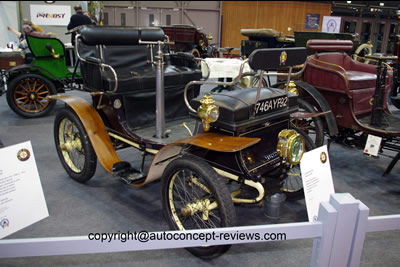

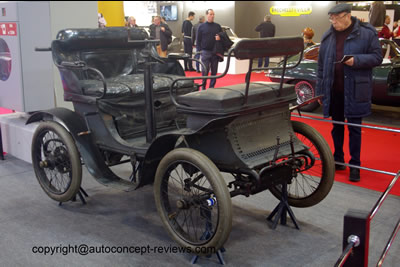

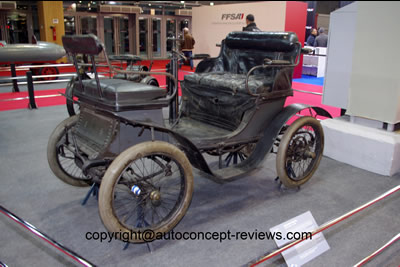


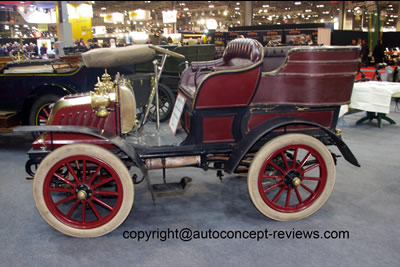
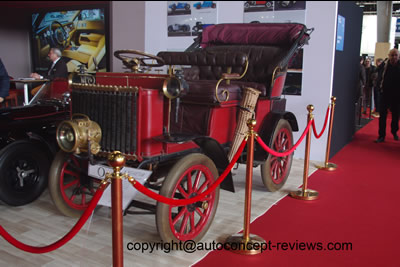

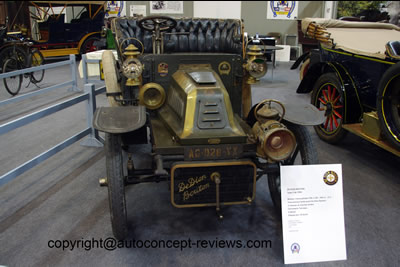
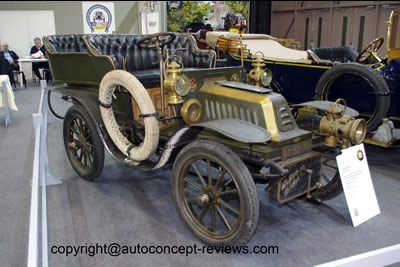
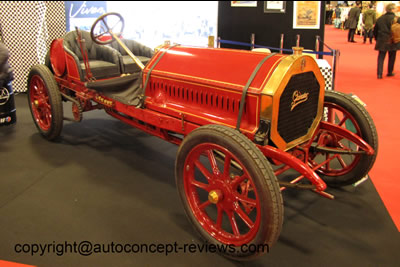
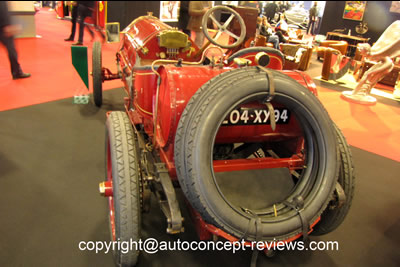
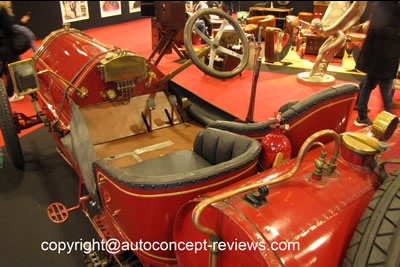
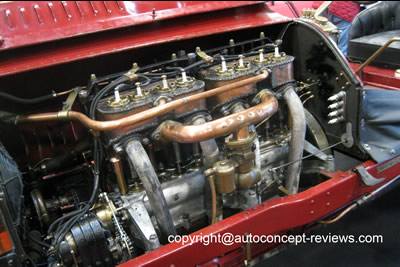




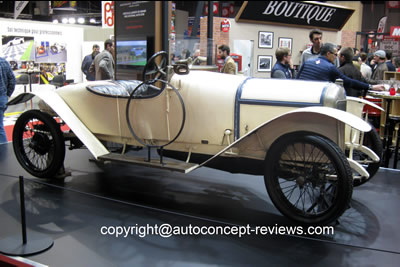
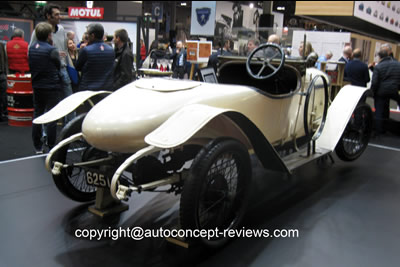




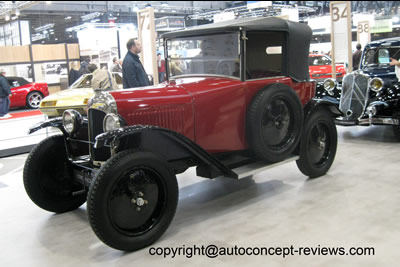

.jpg)
